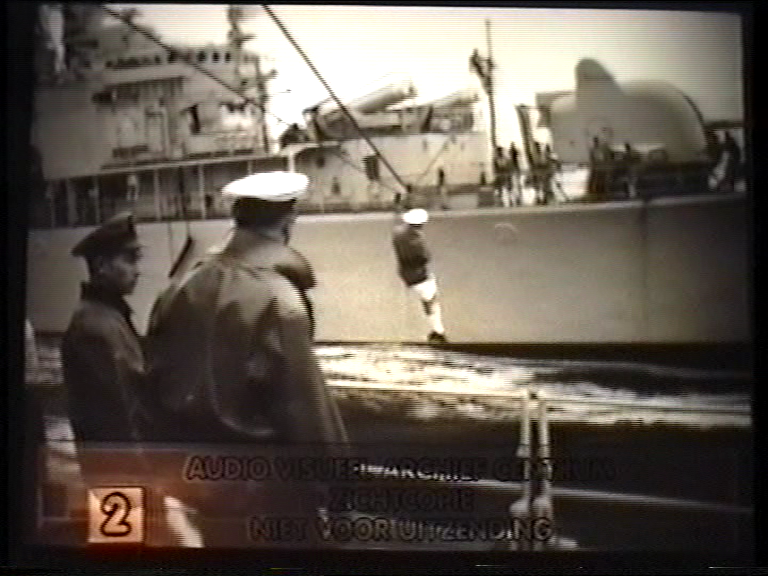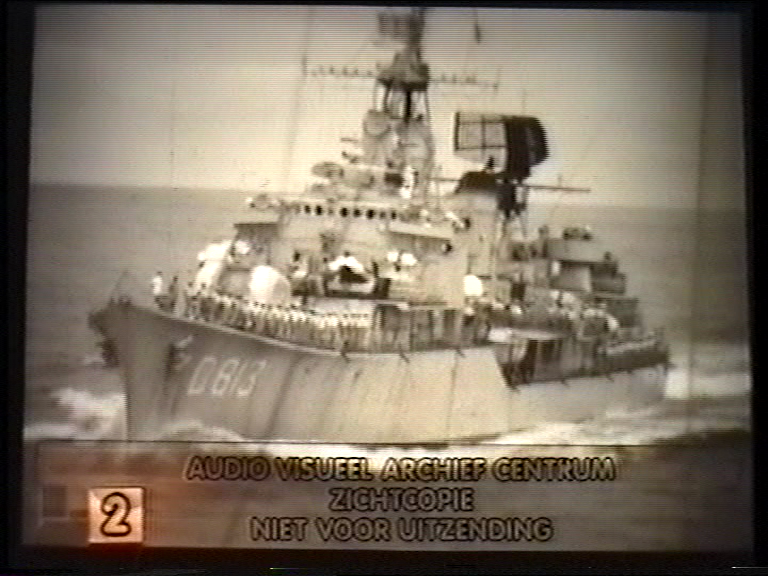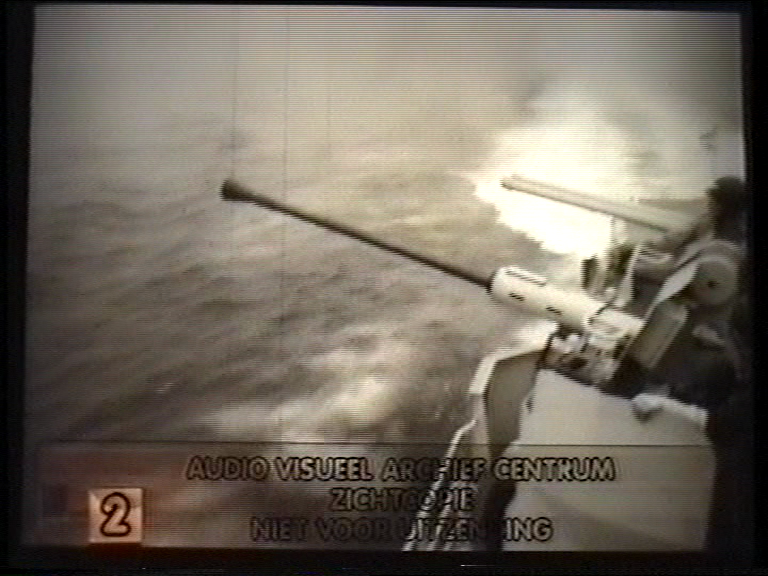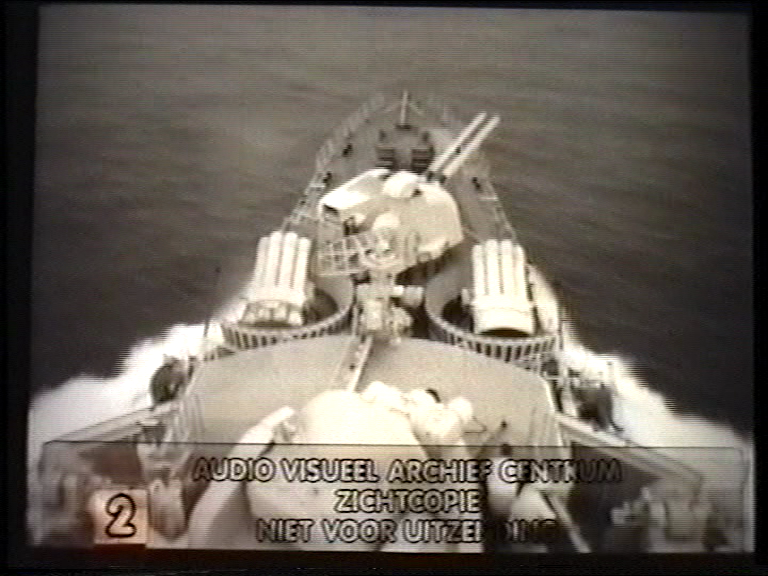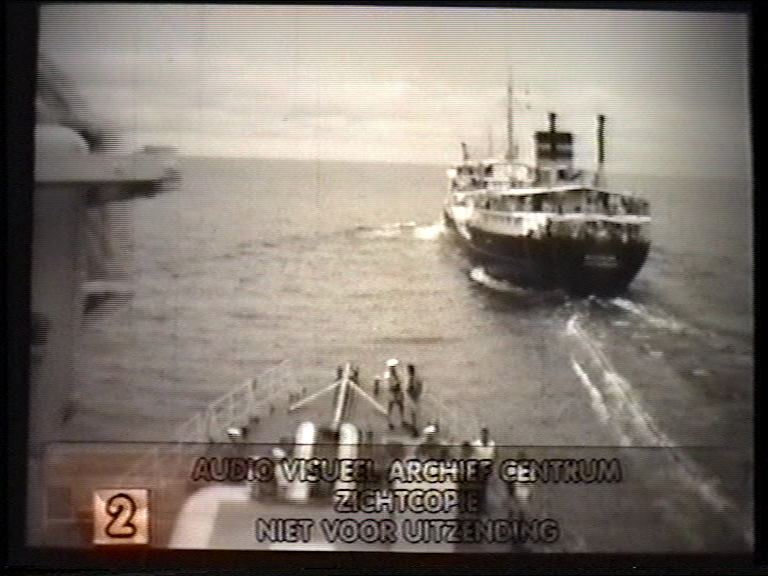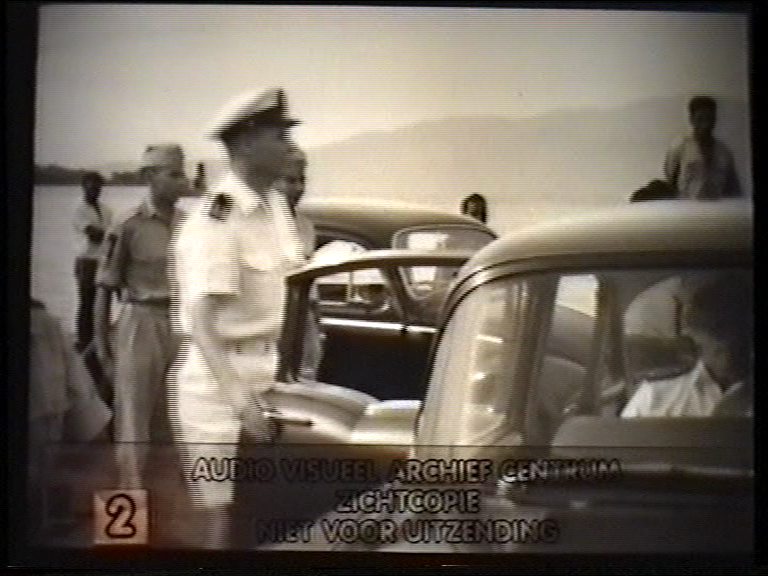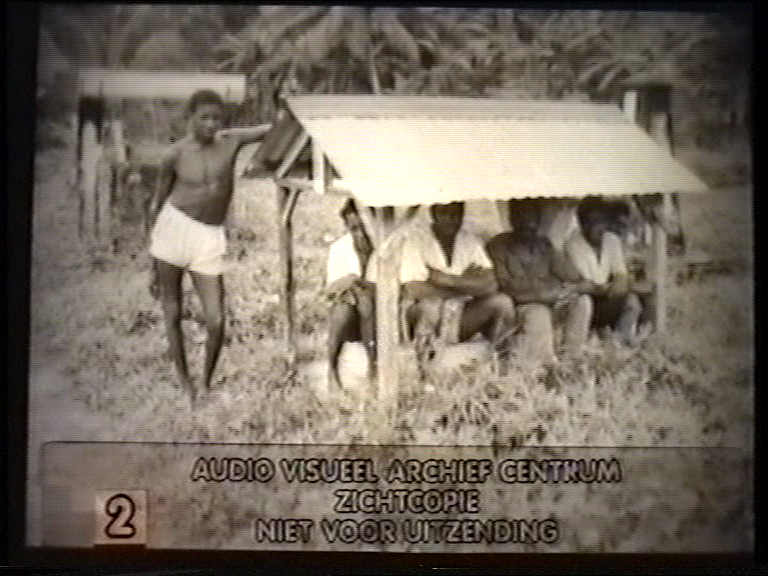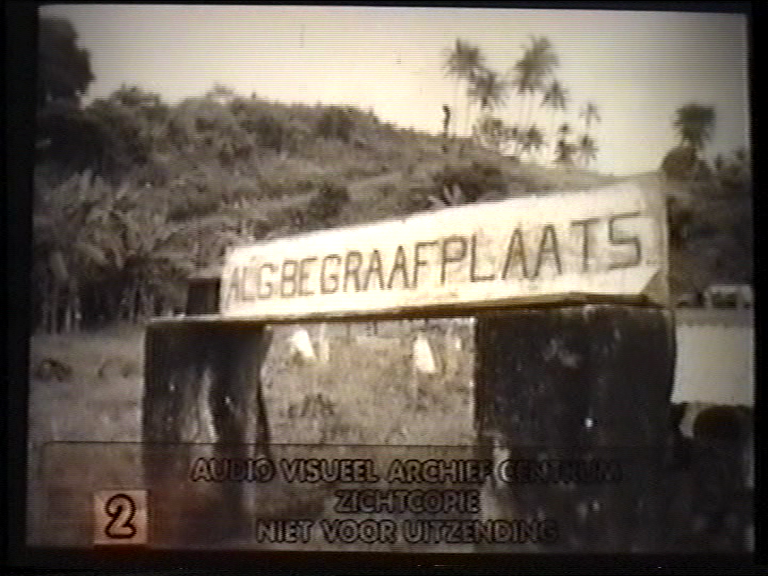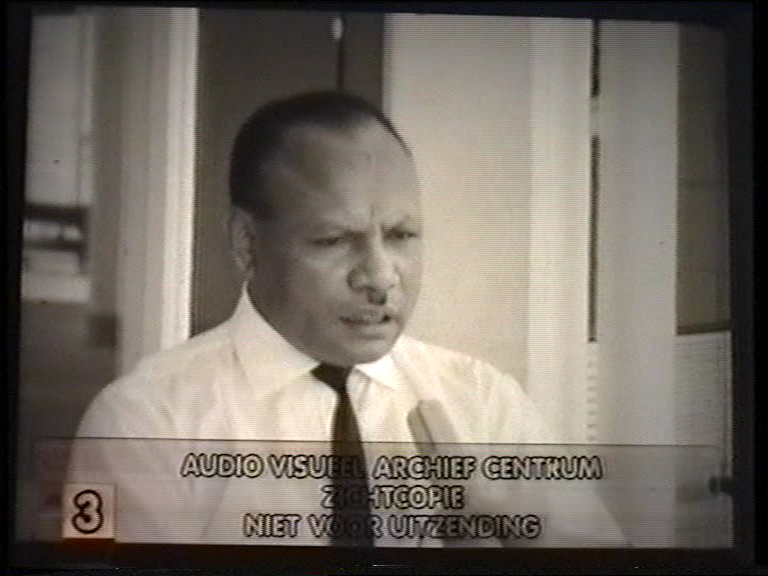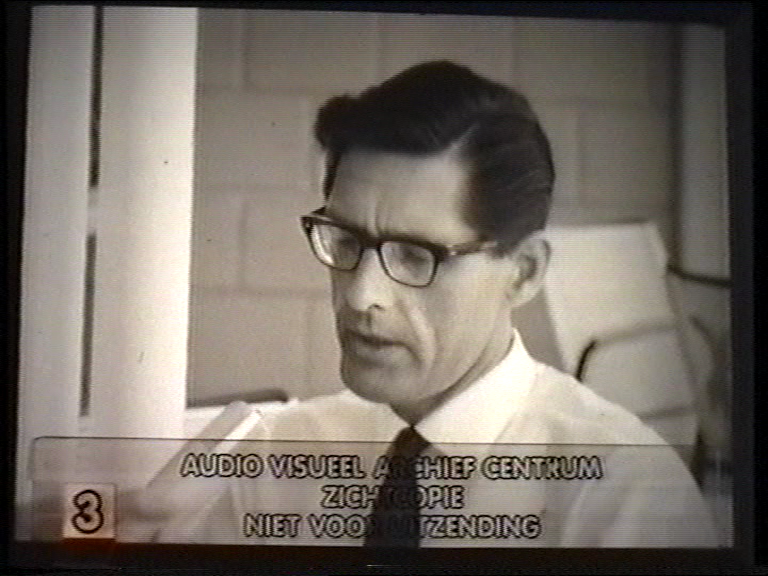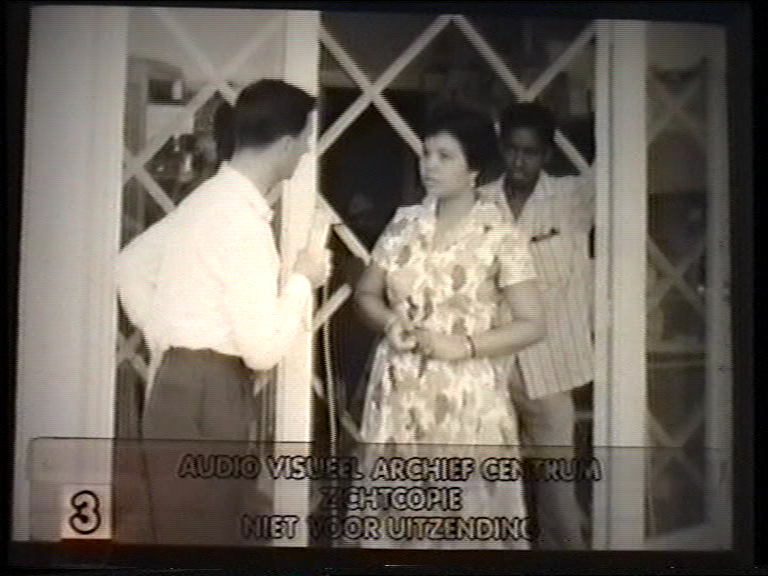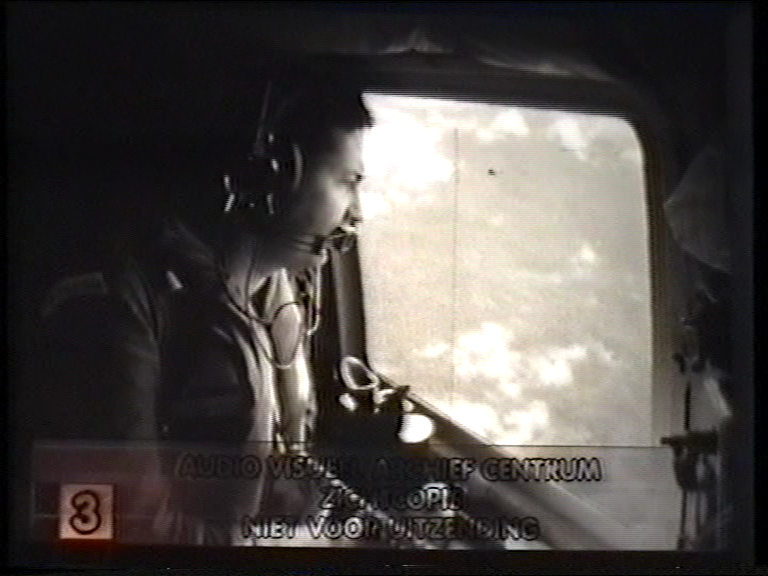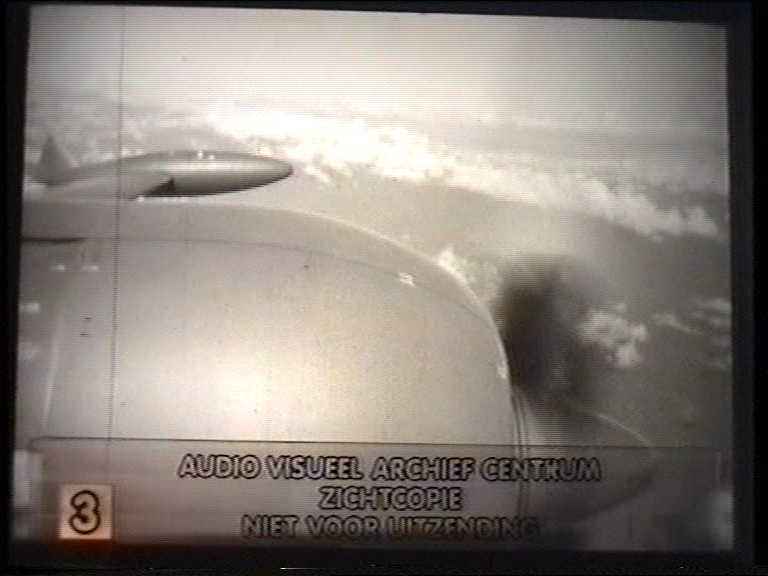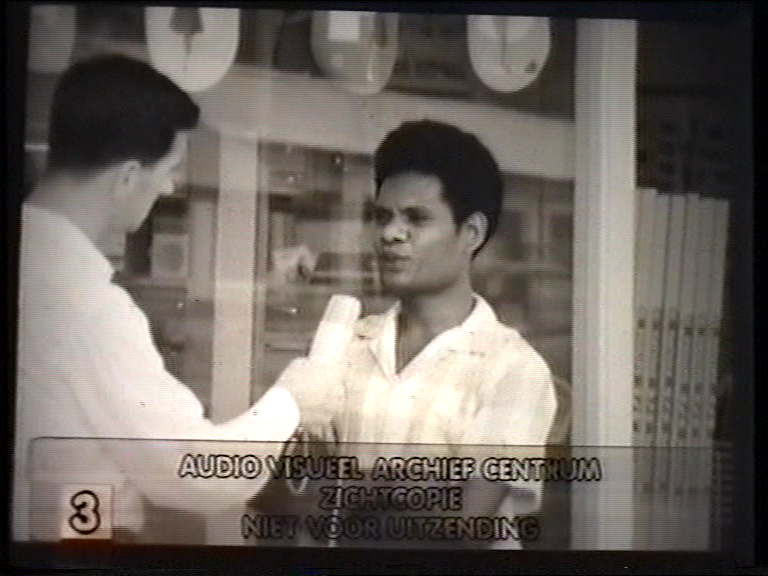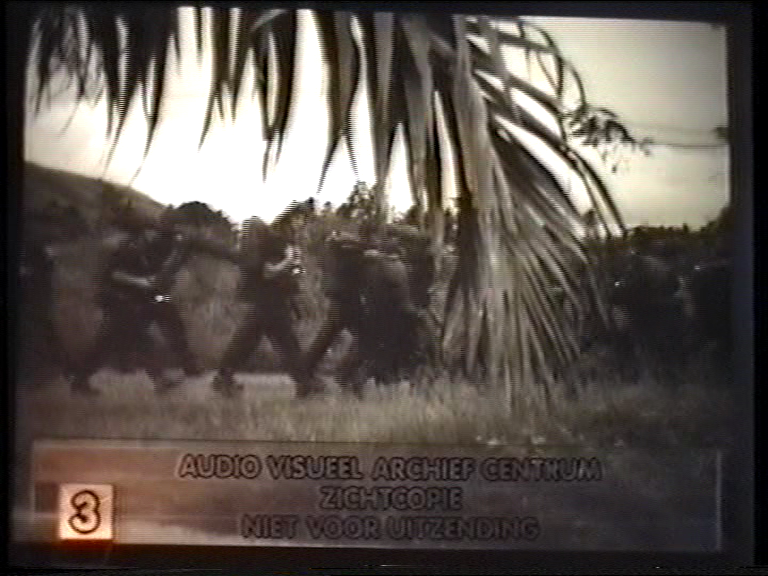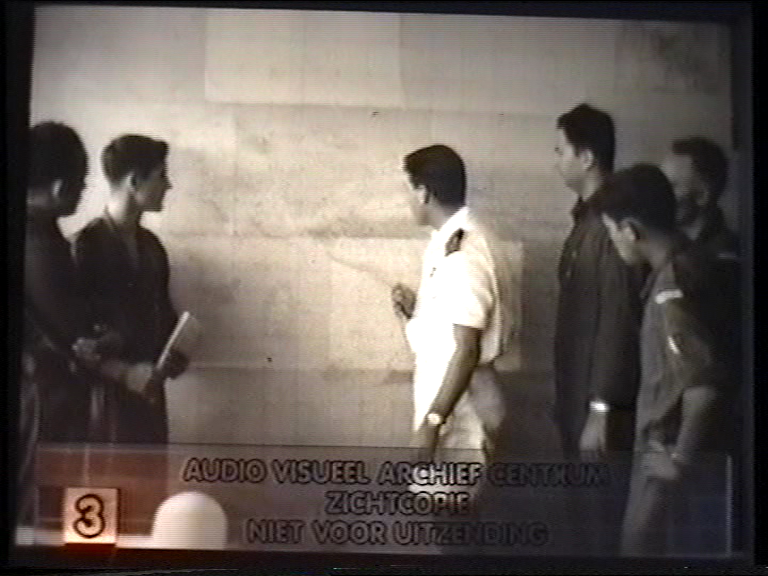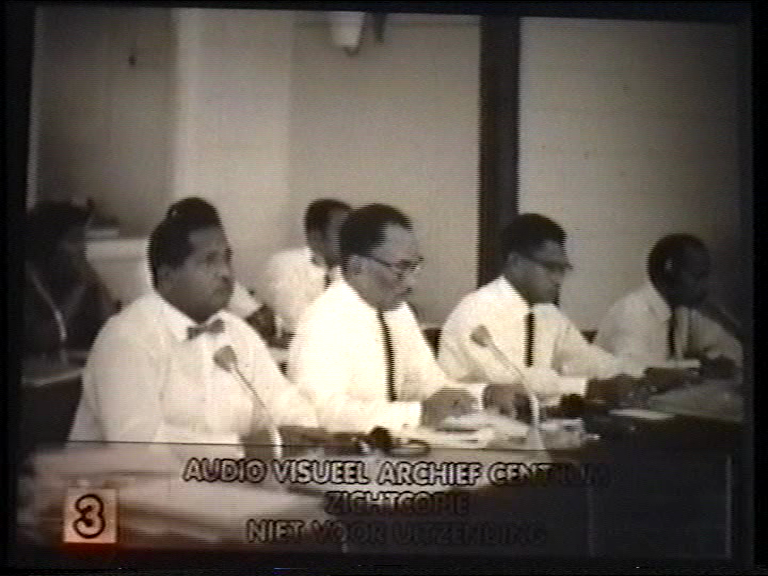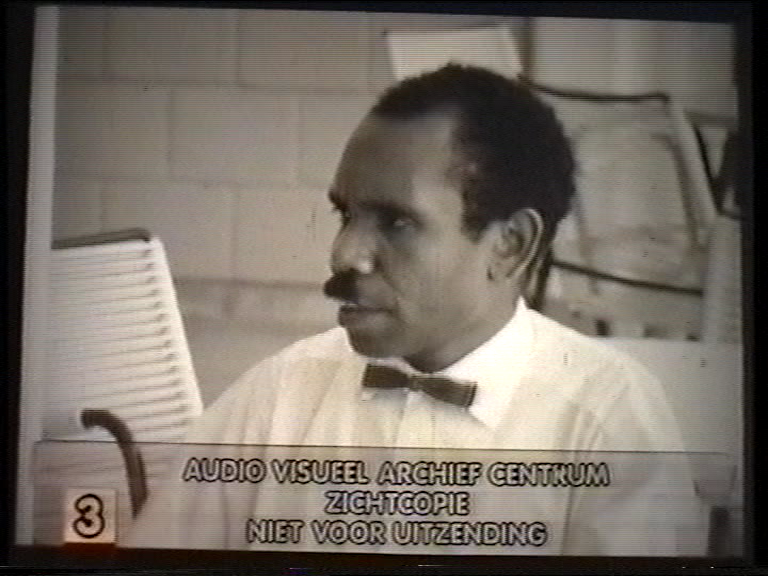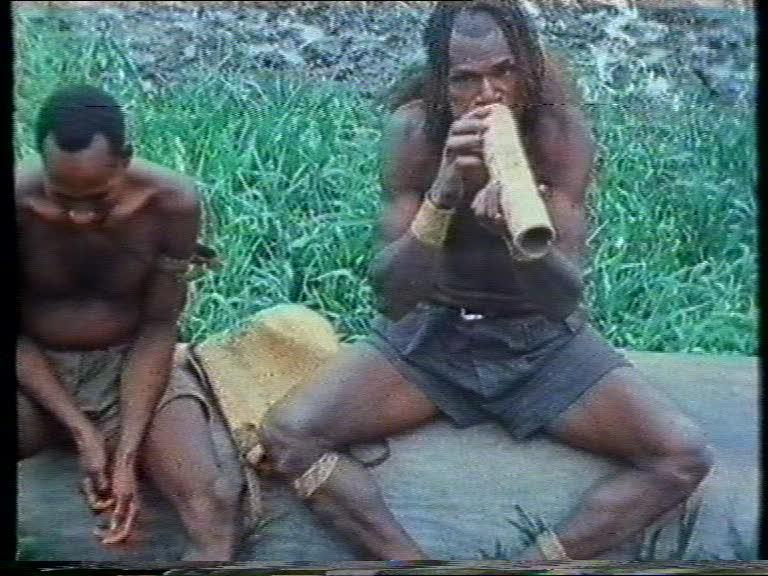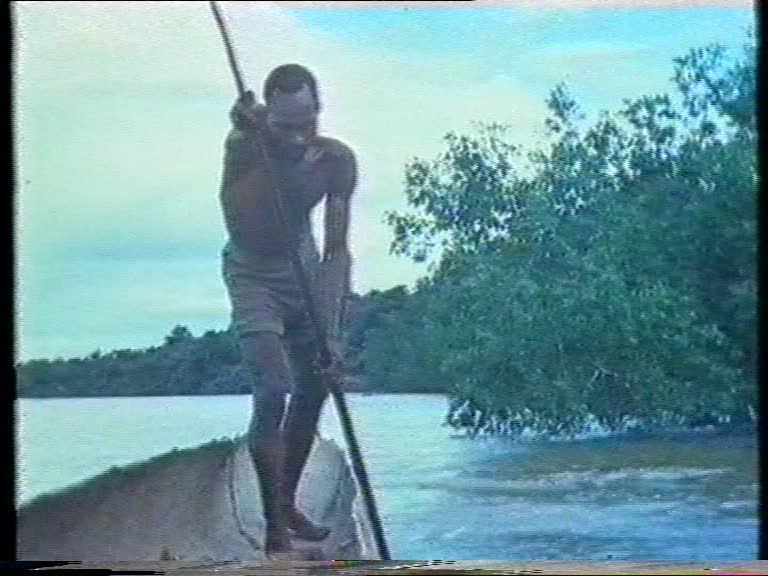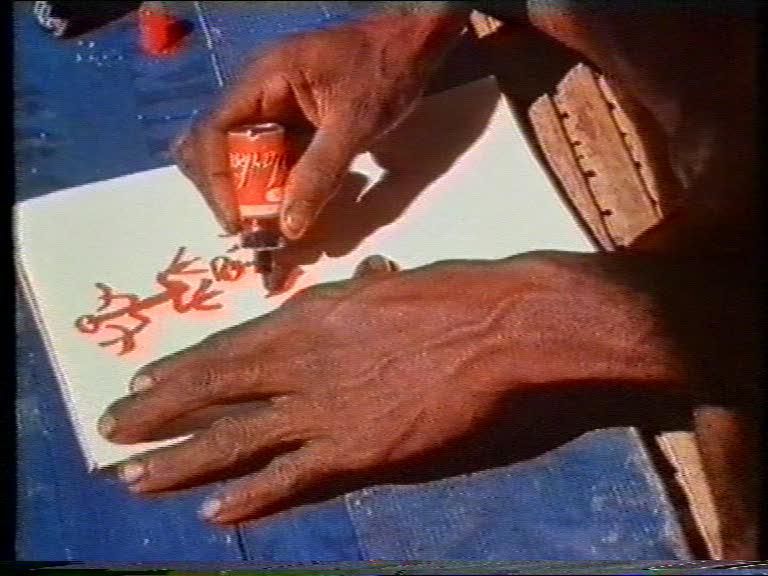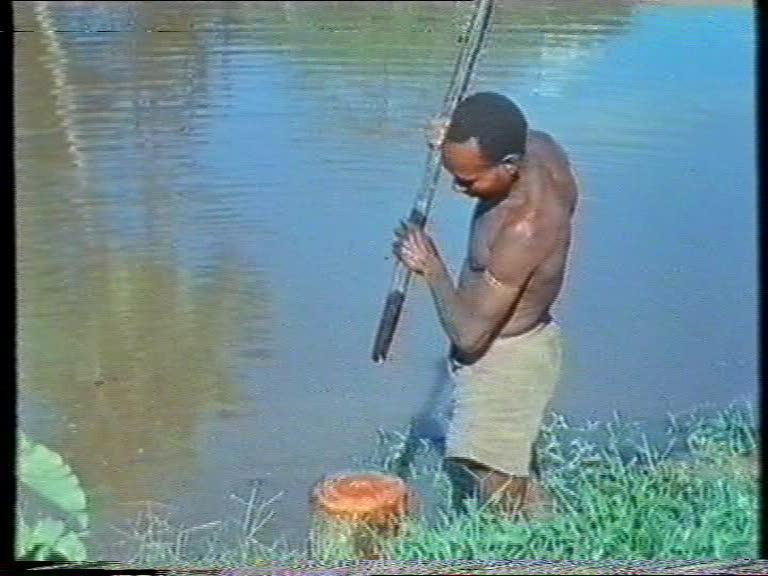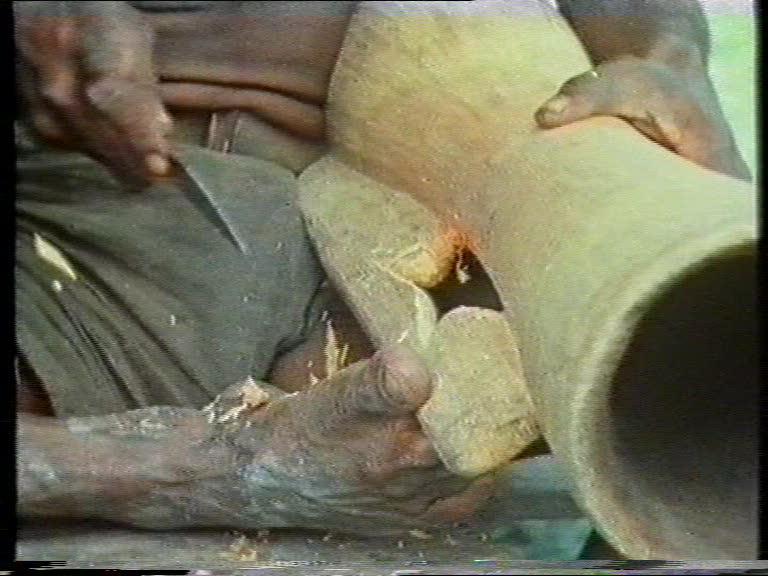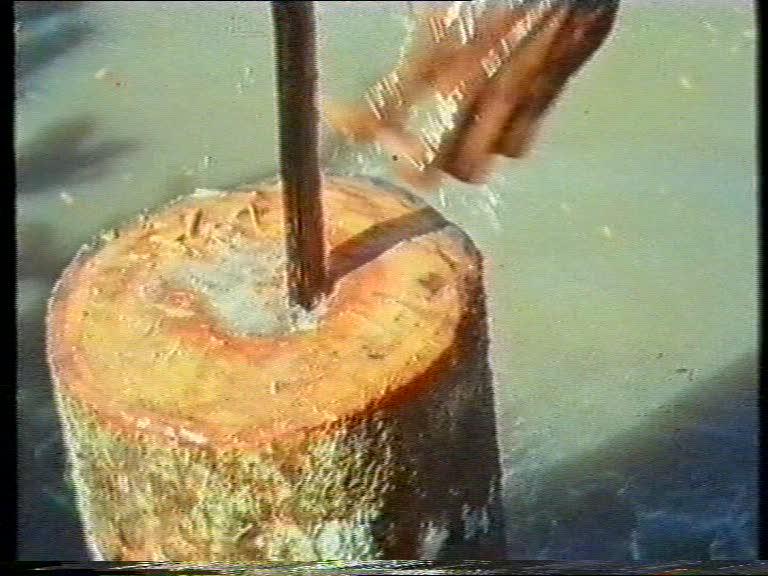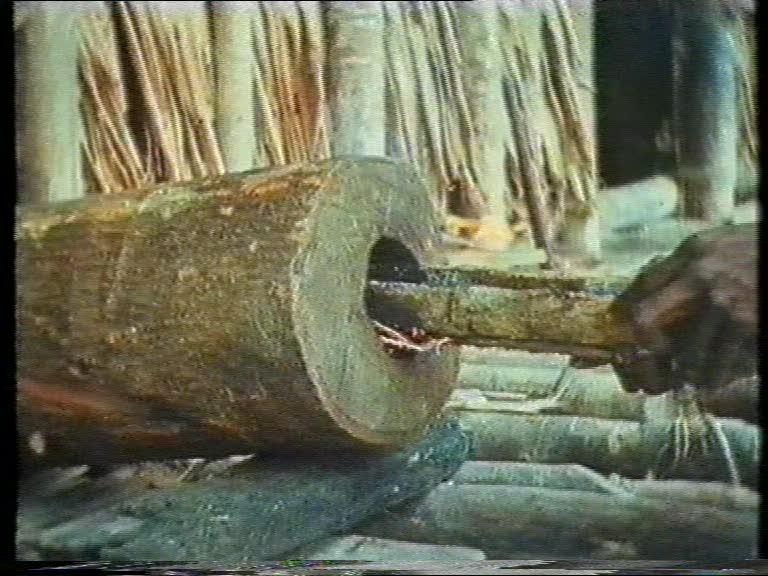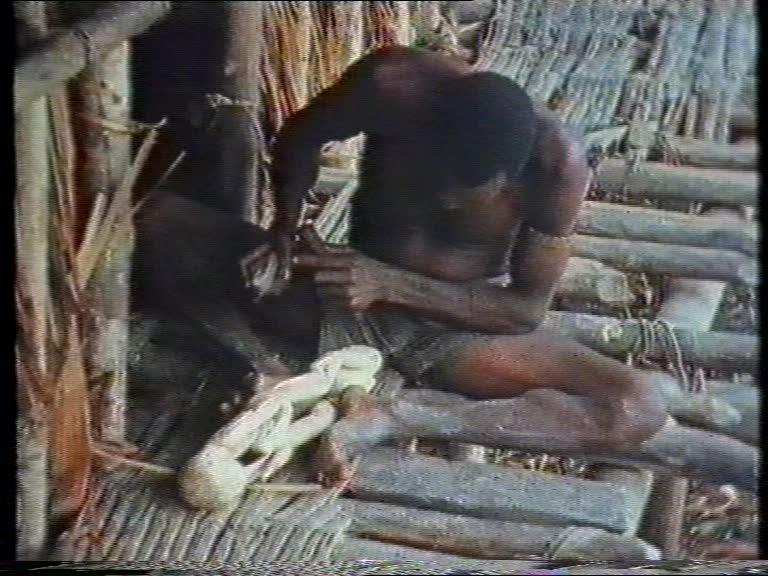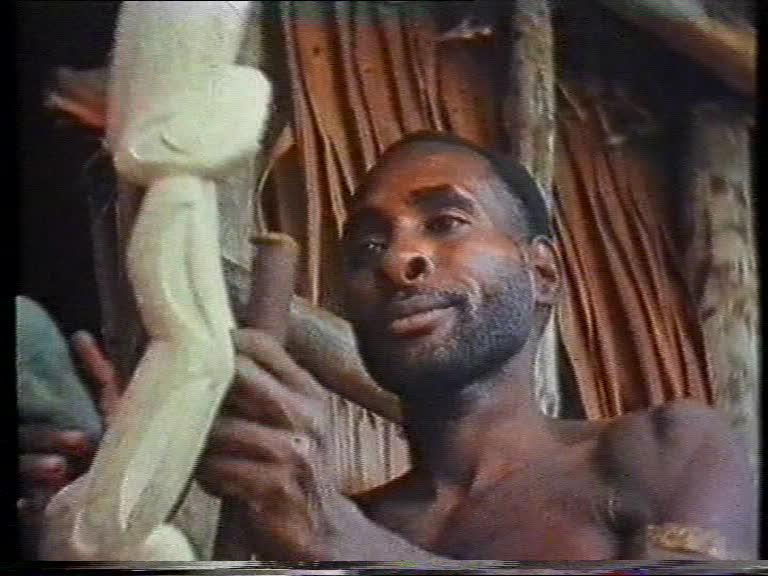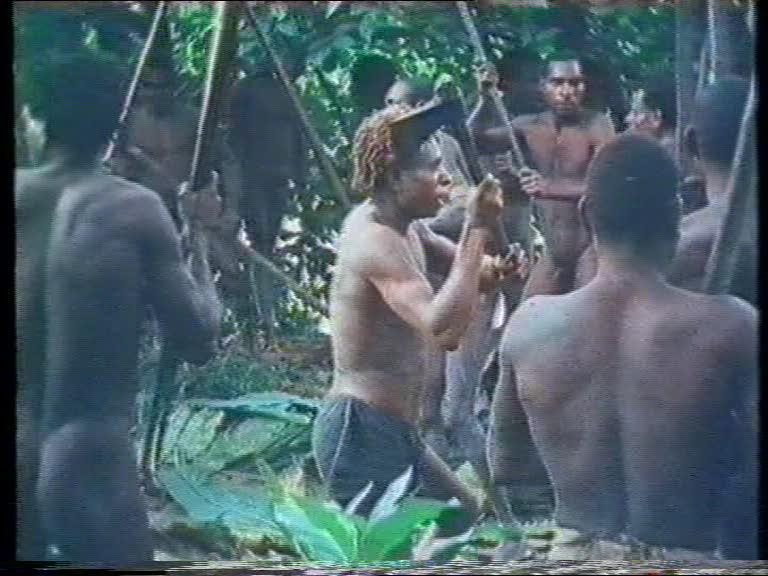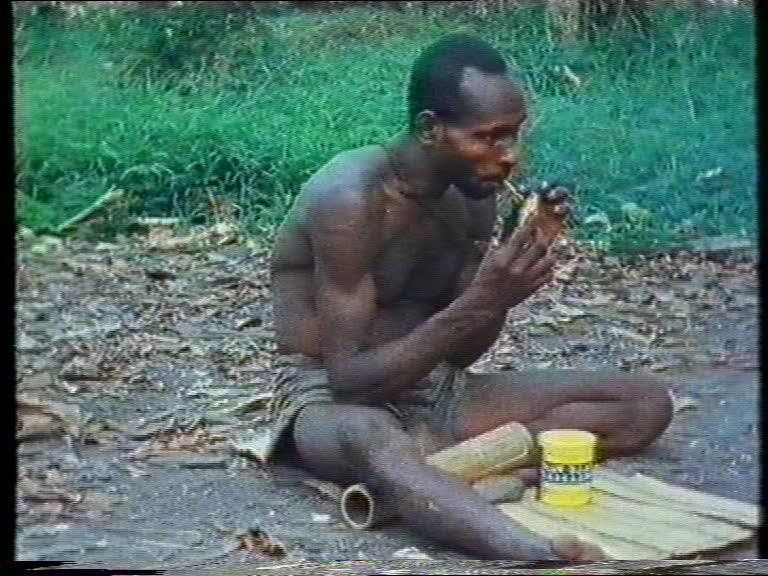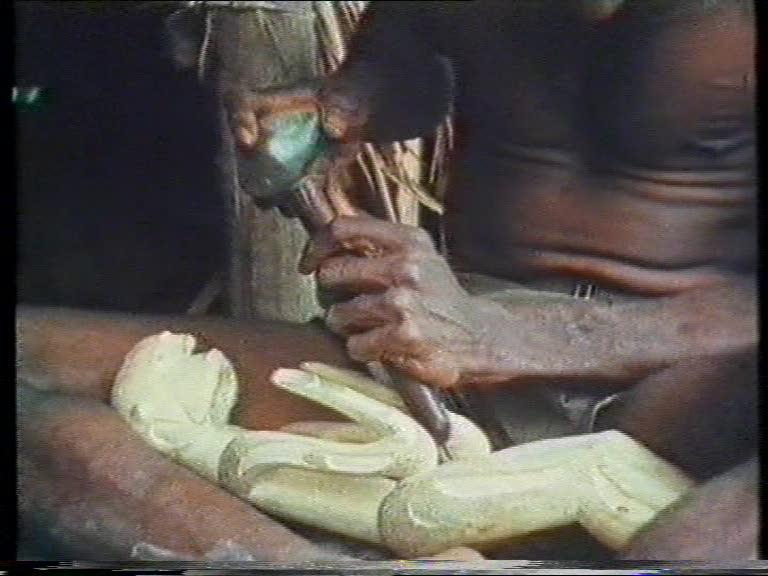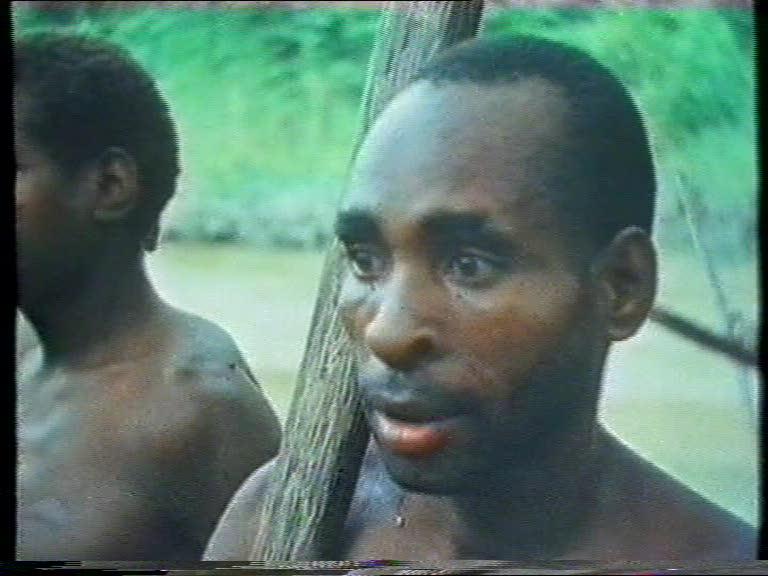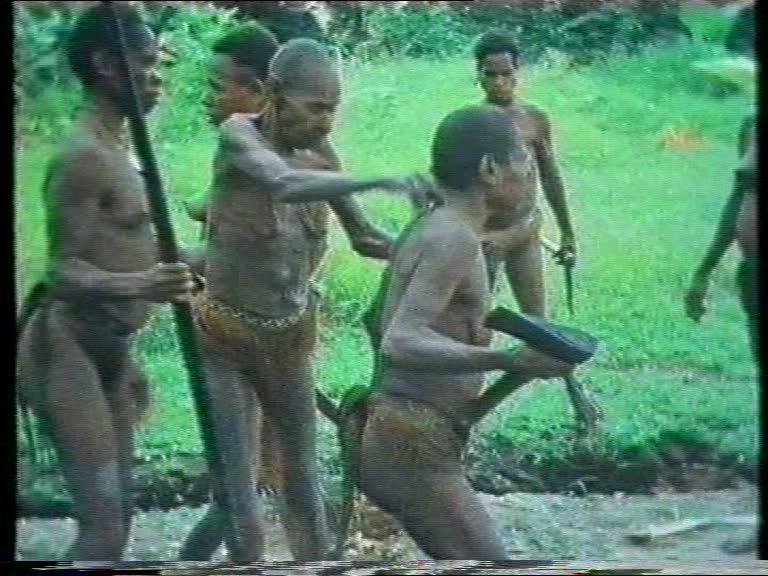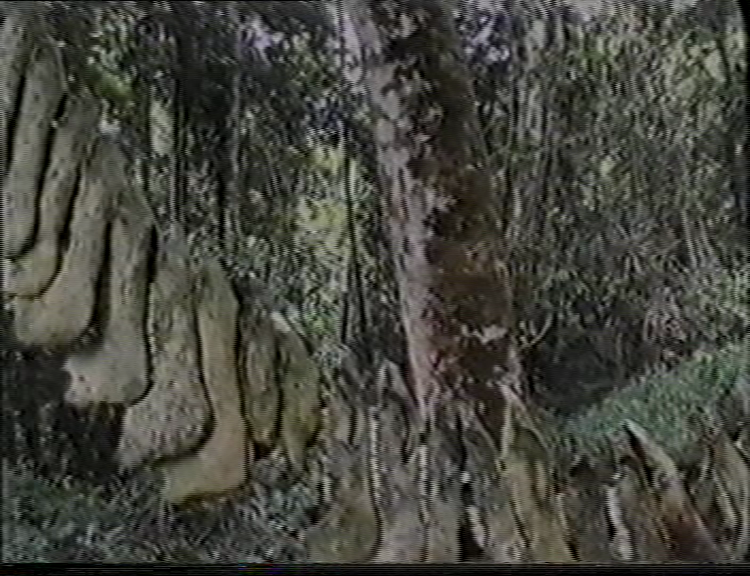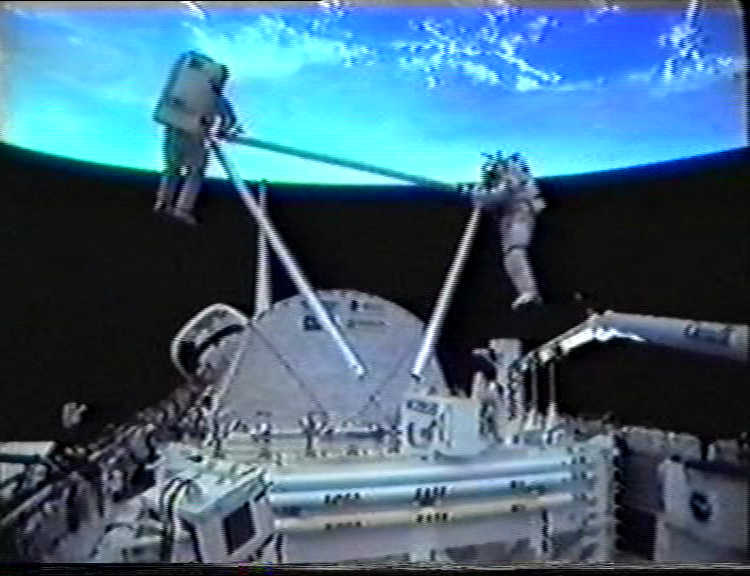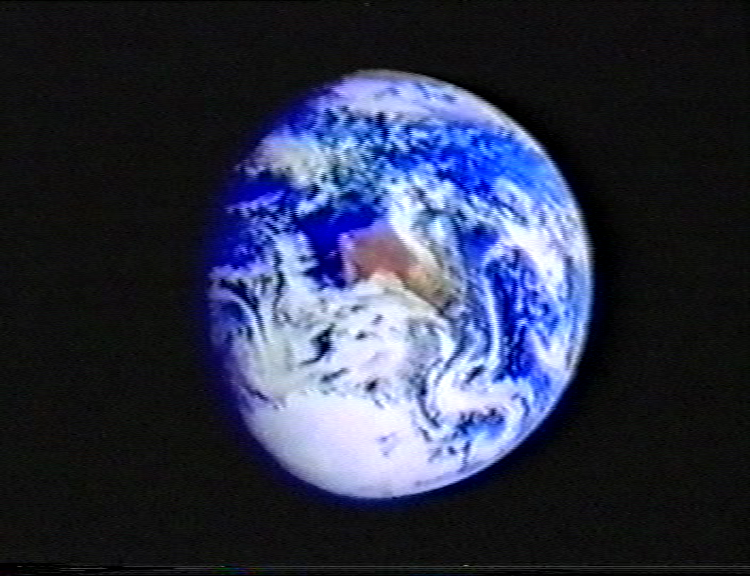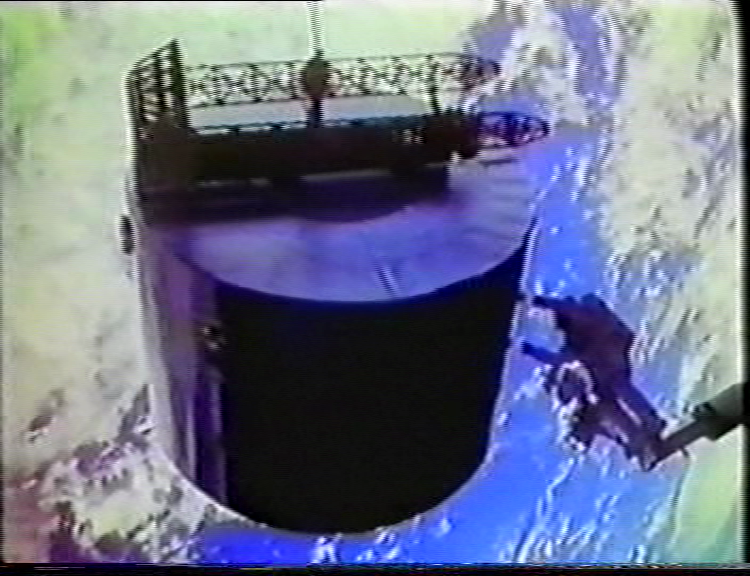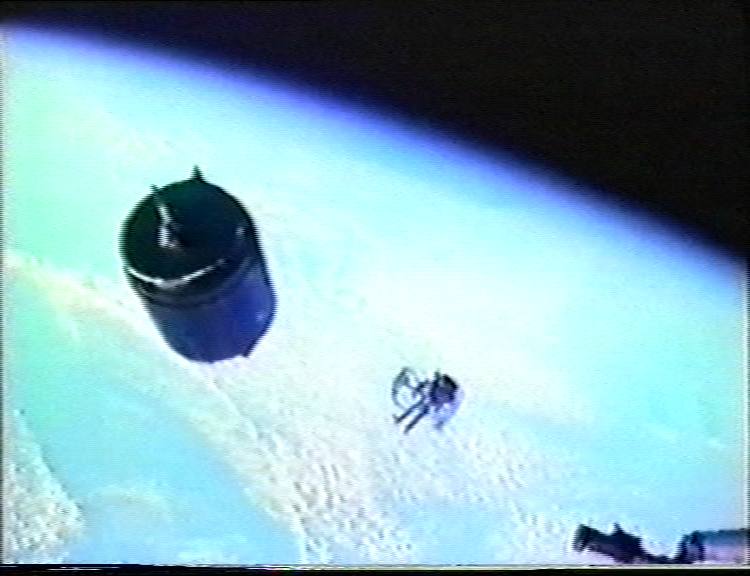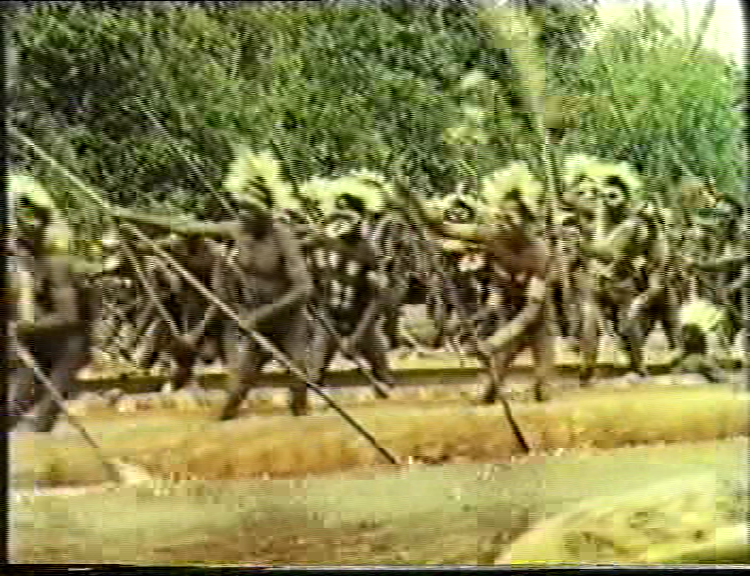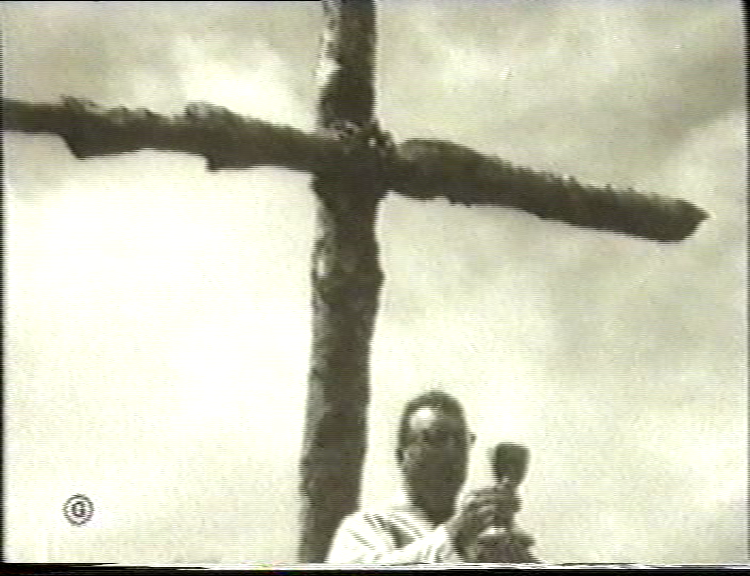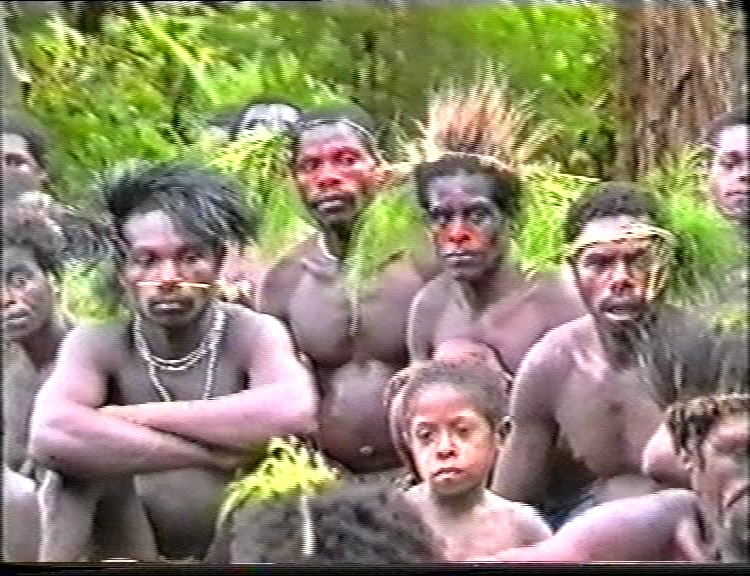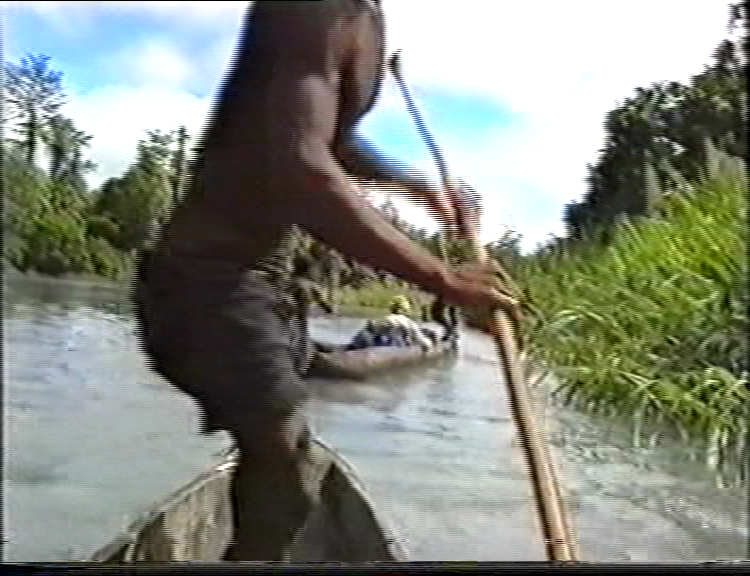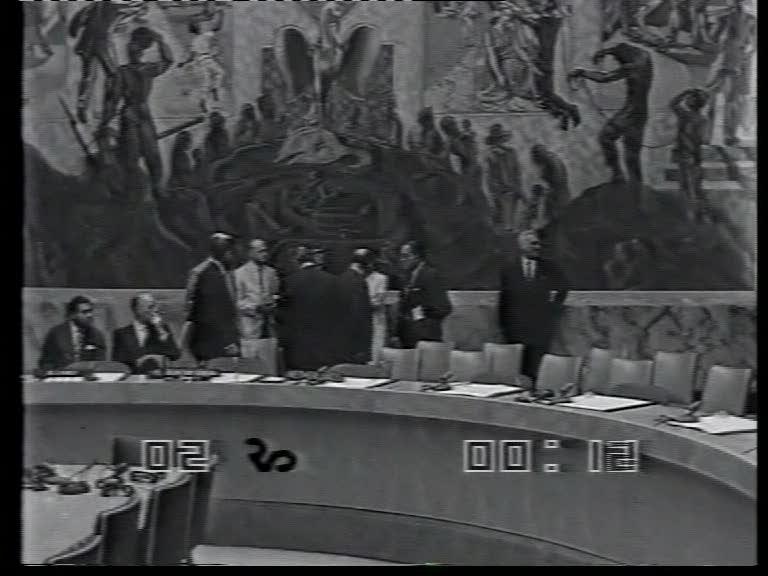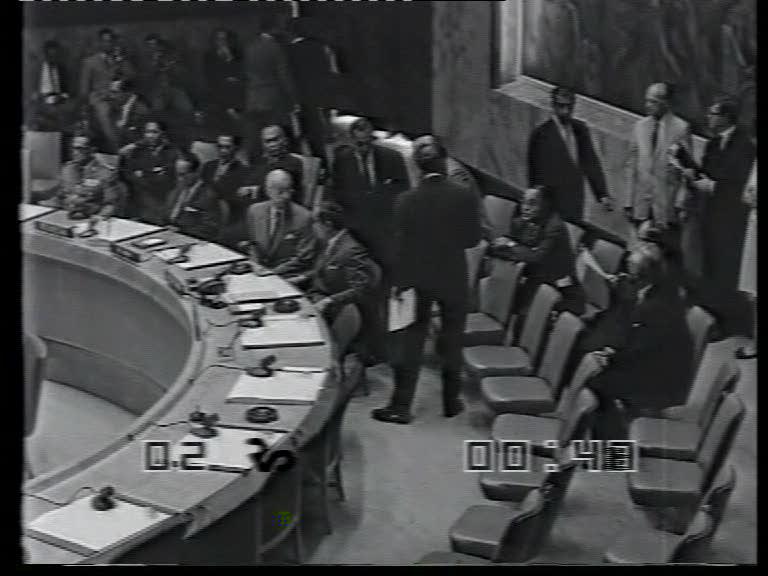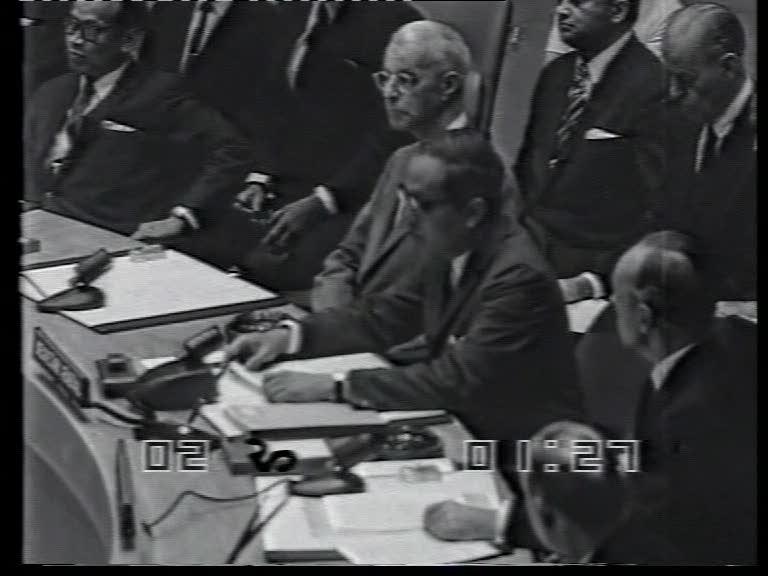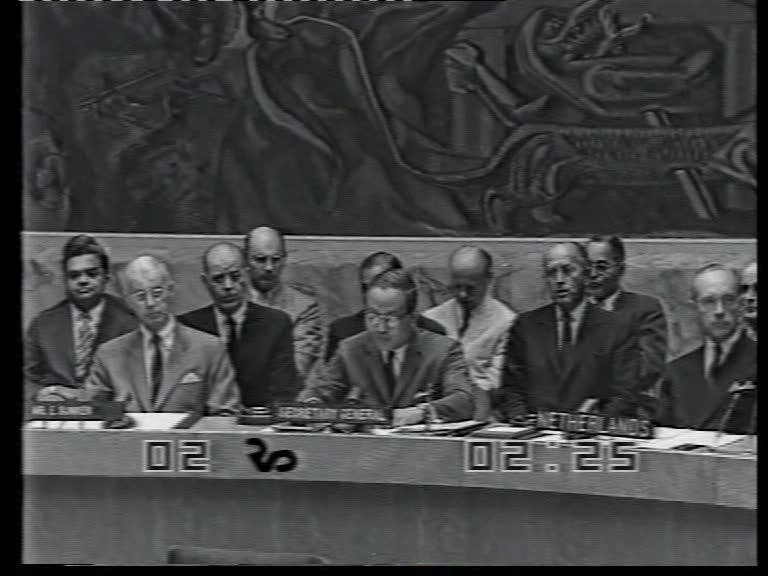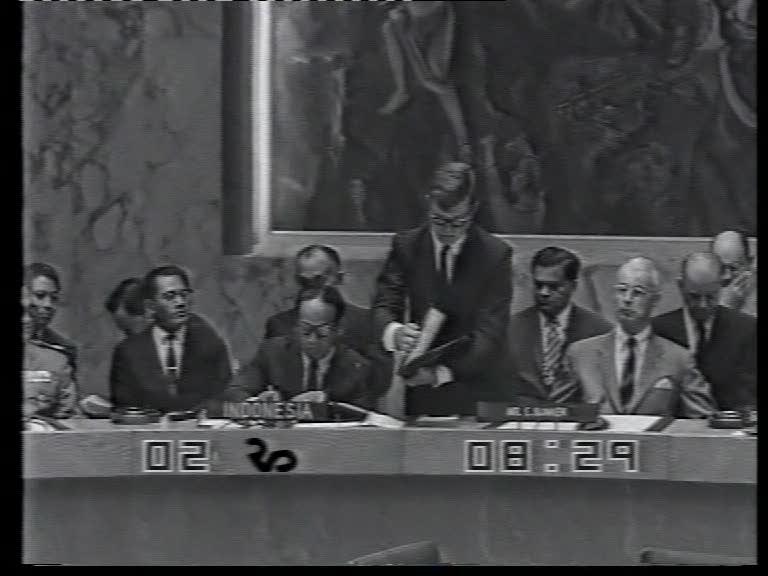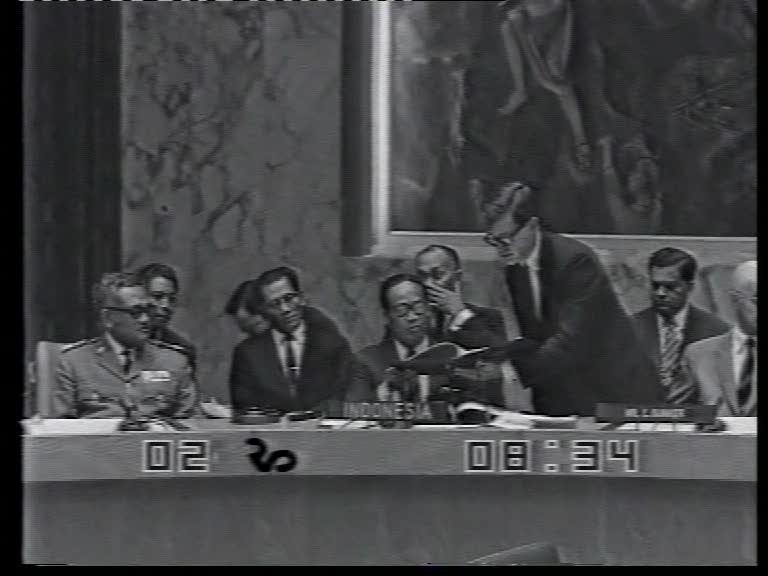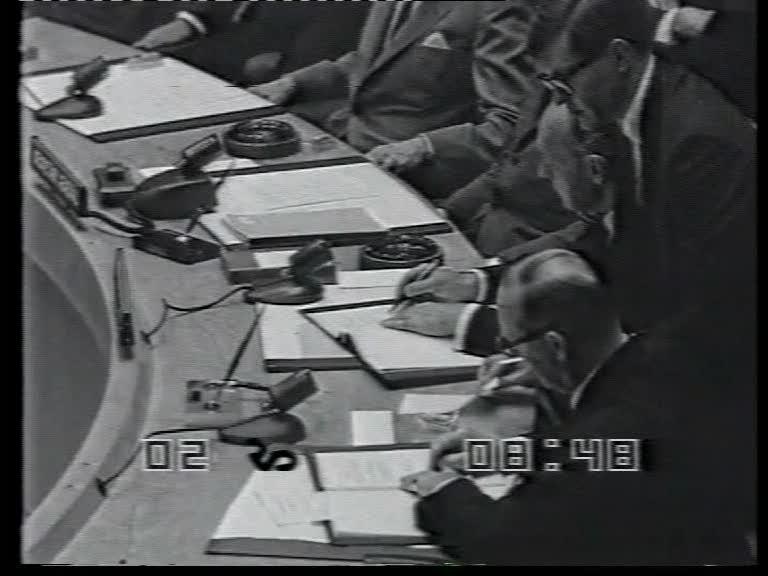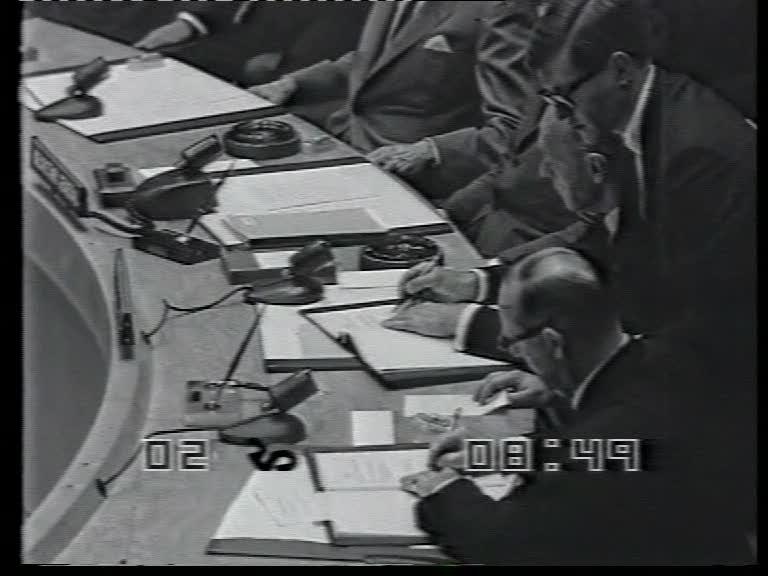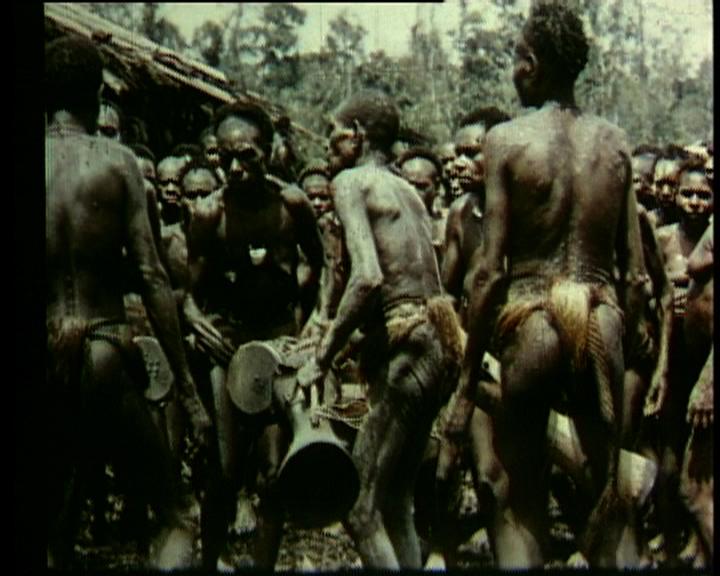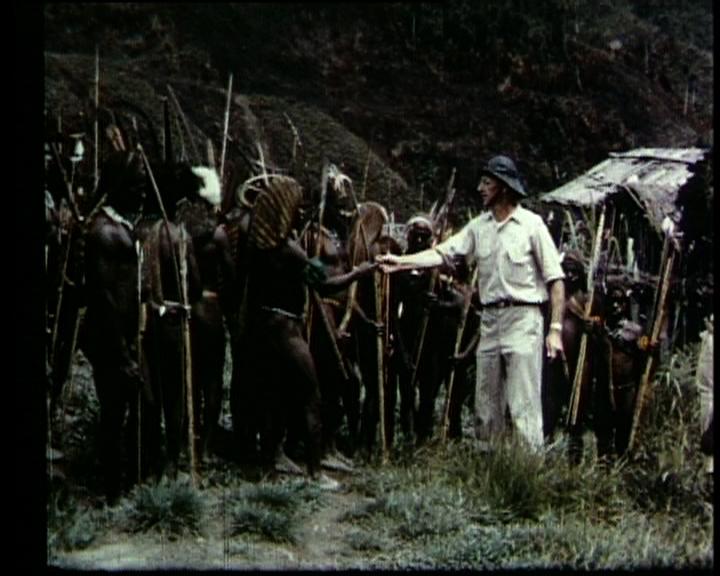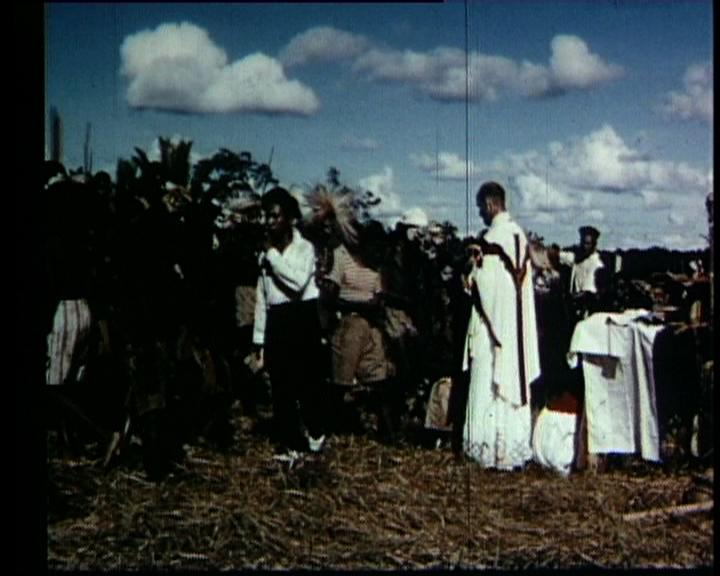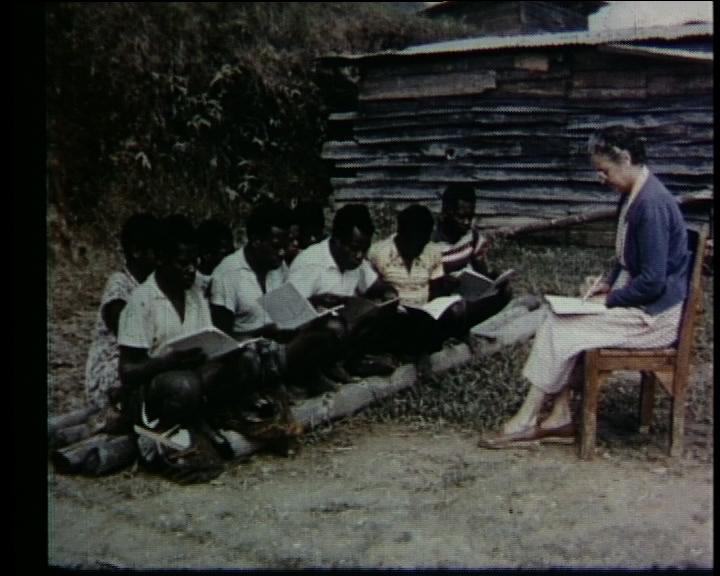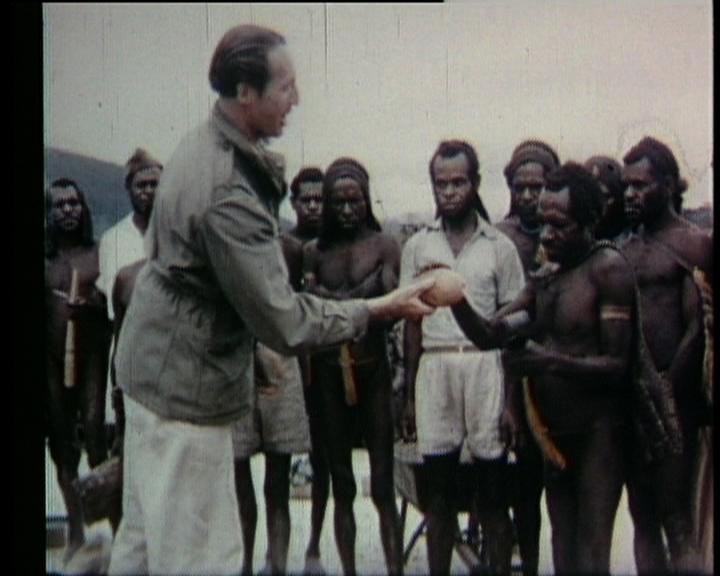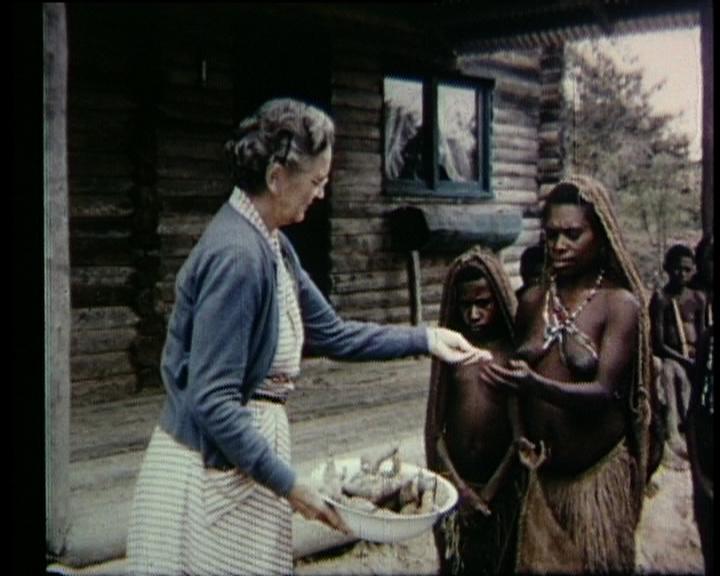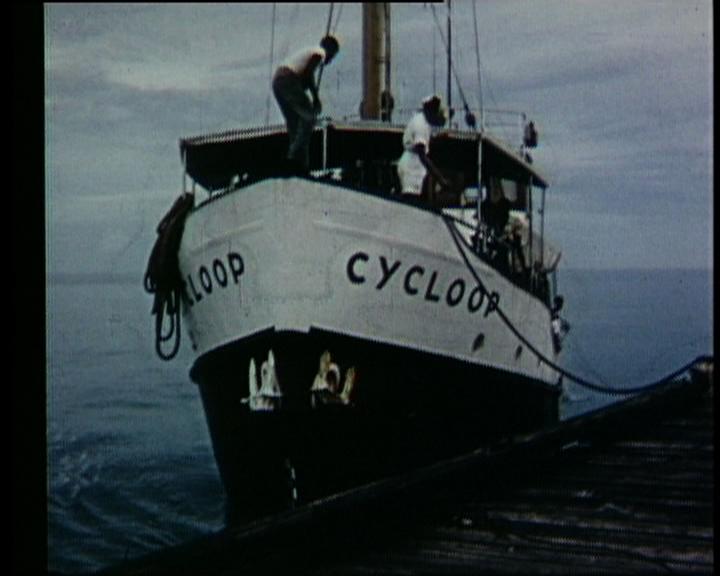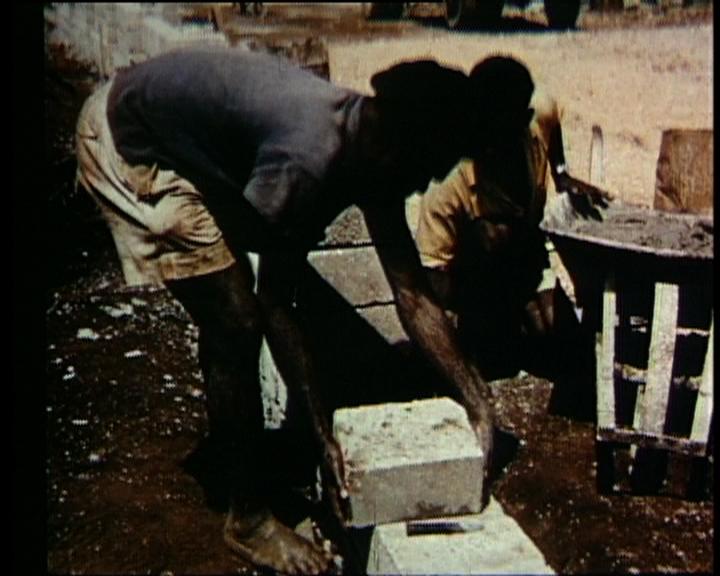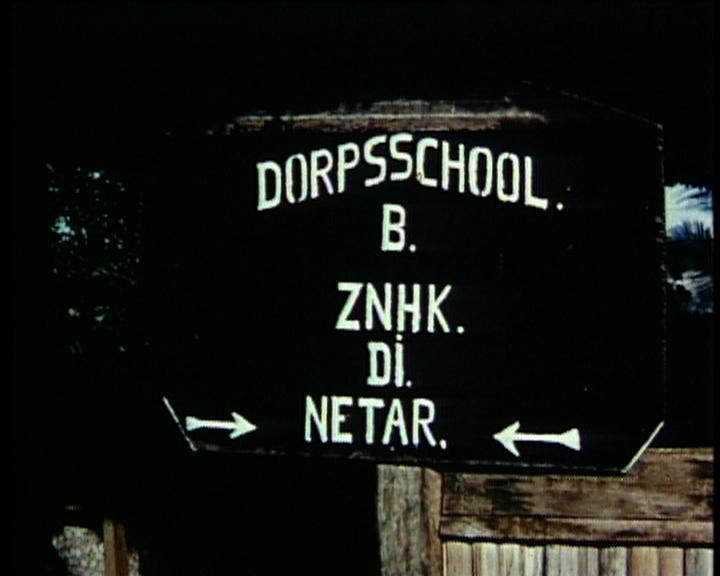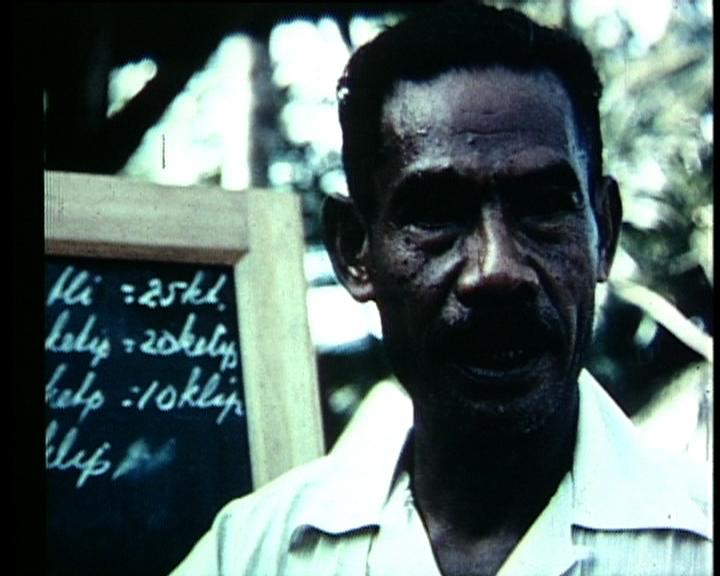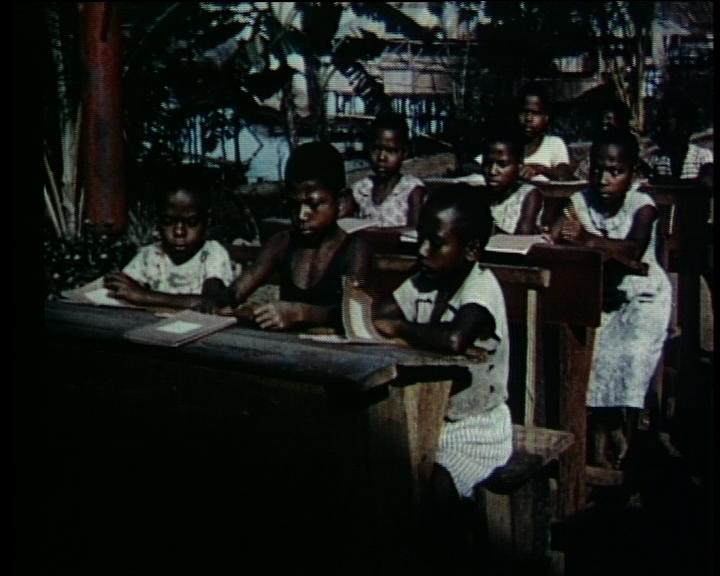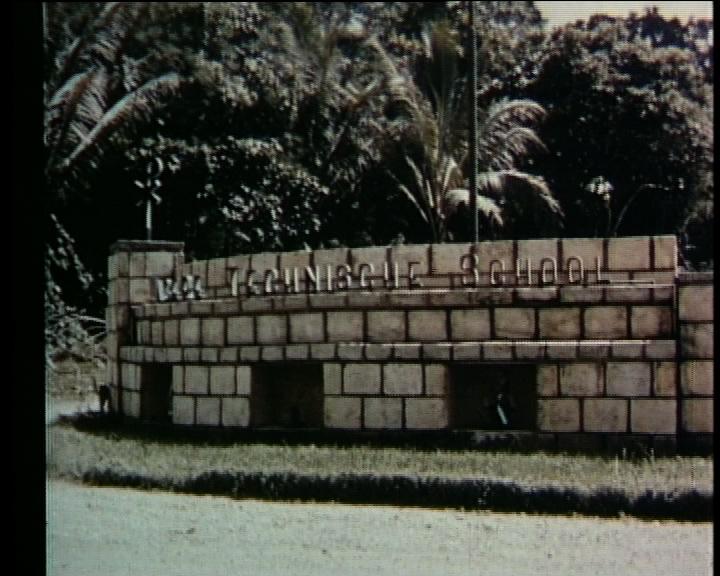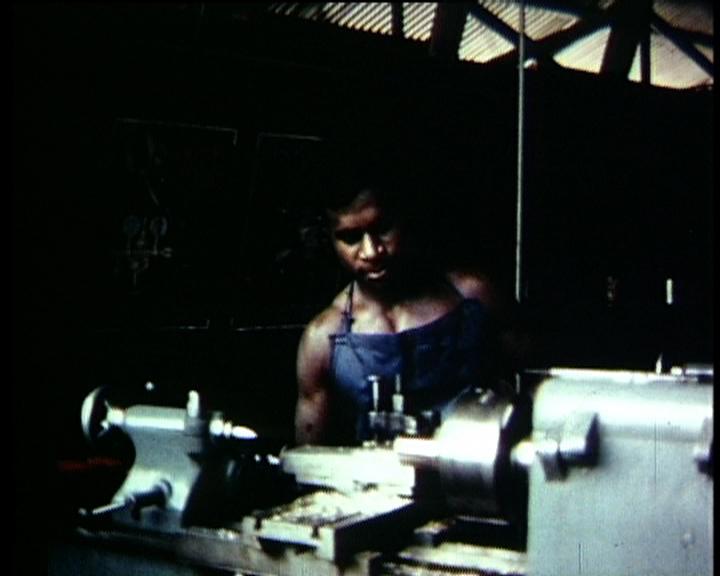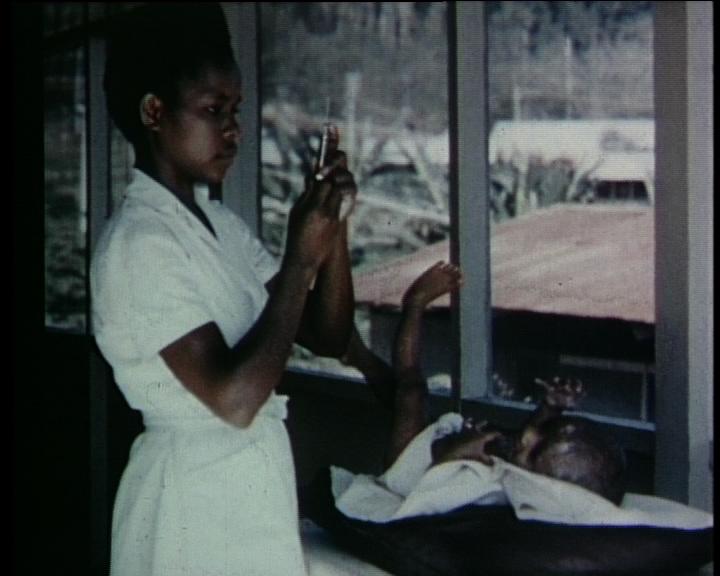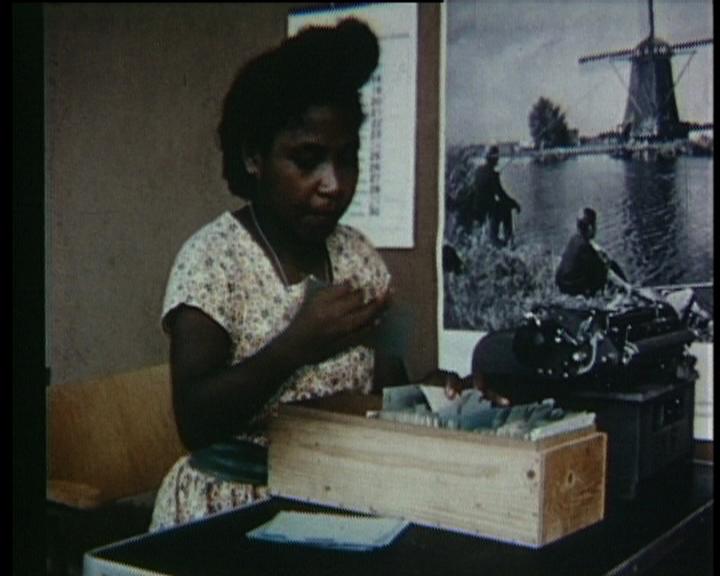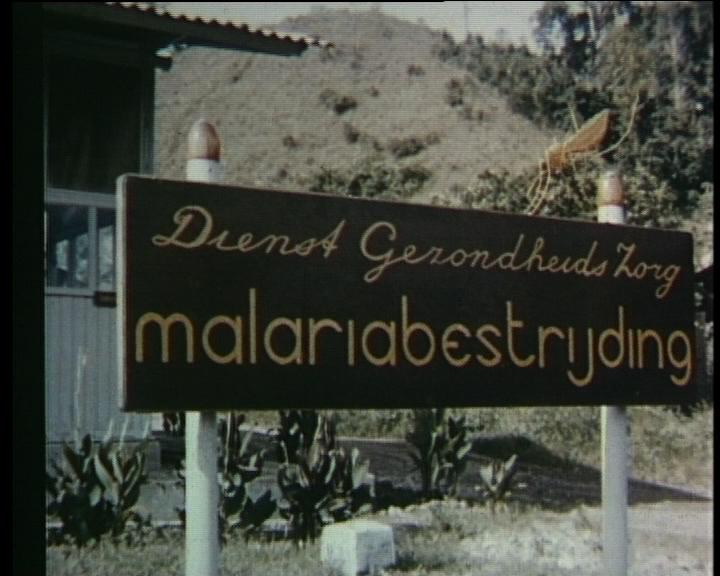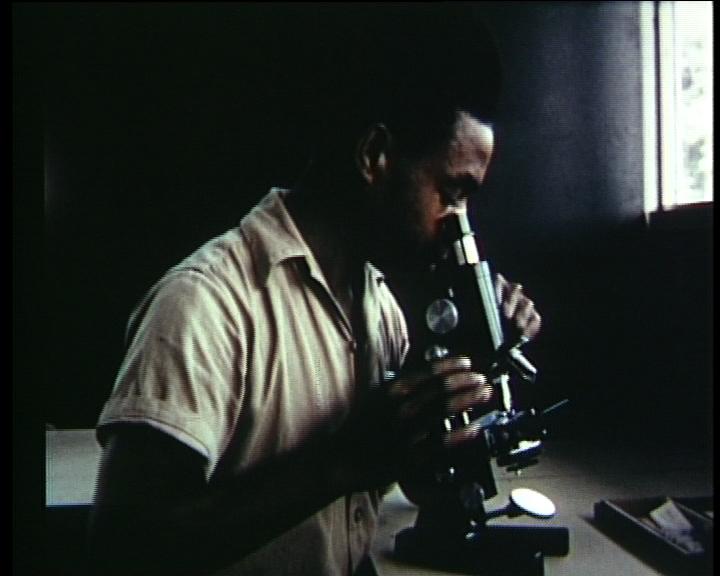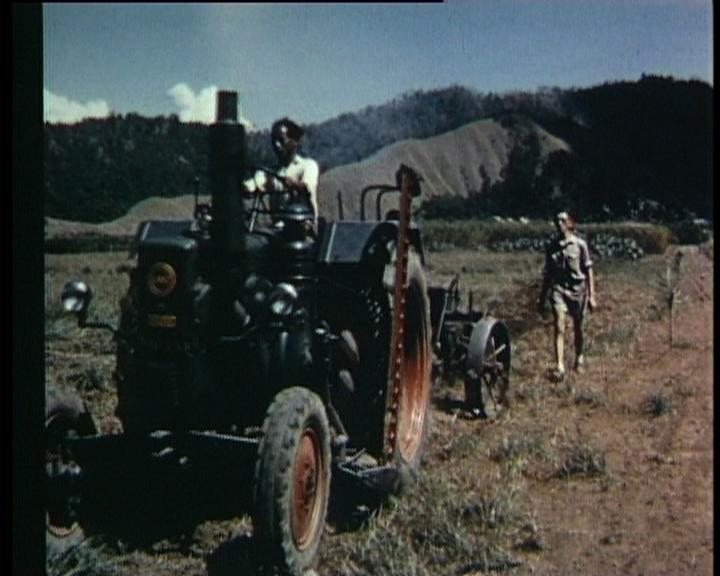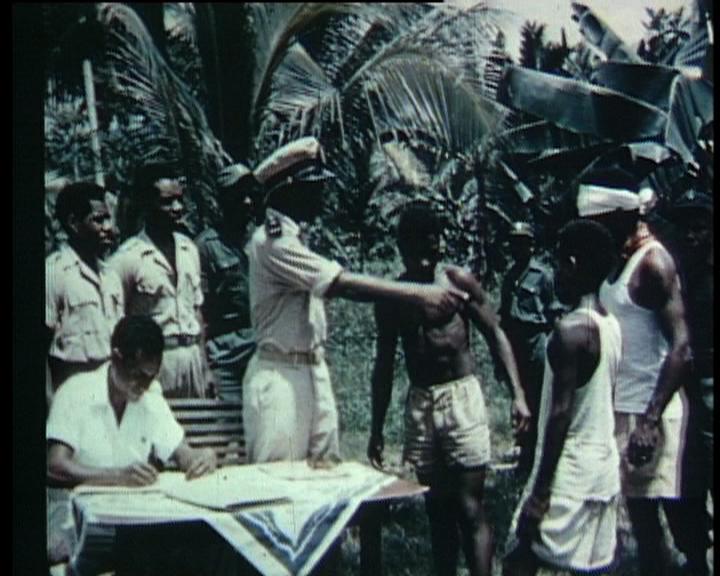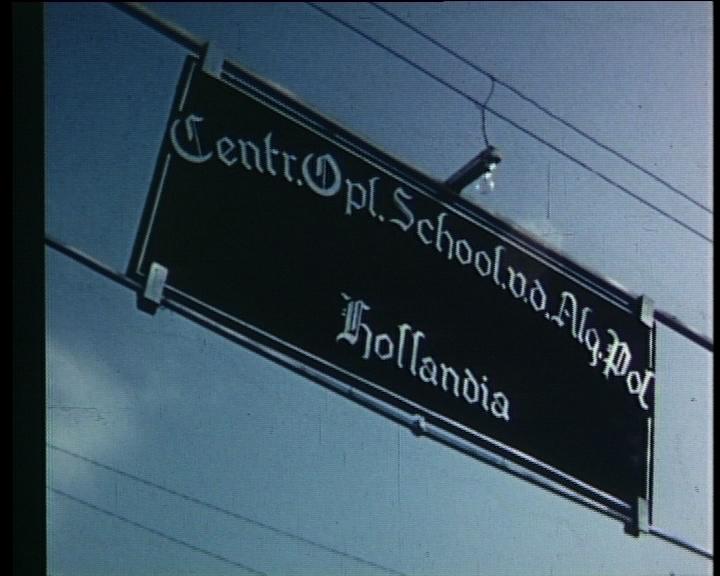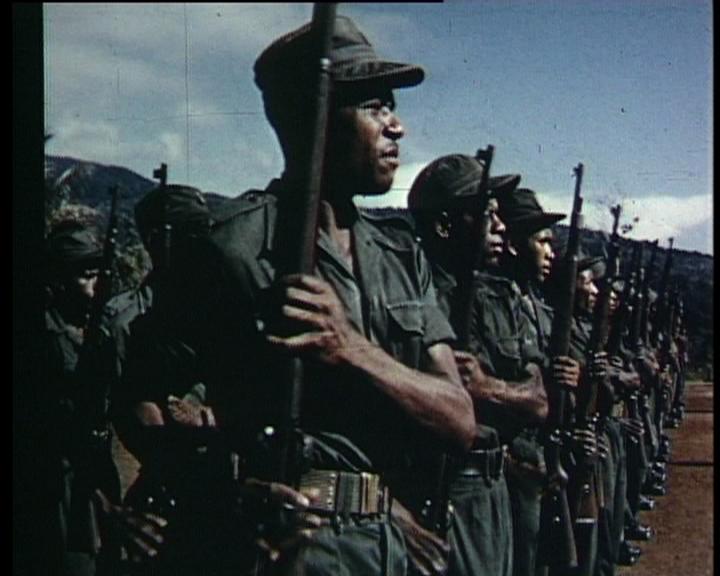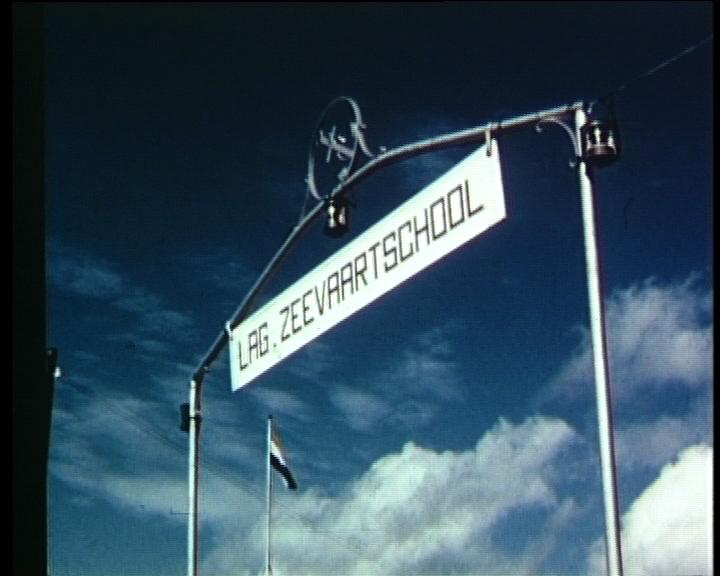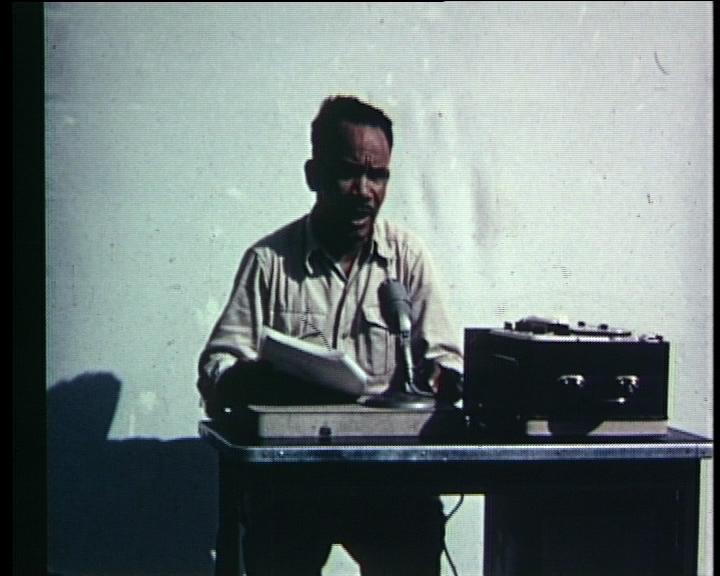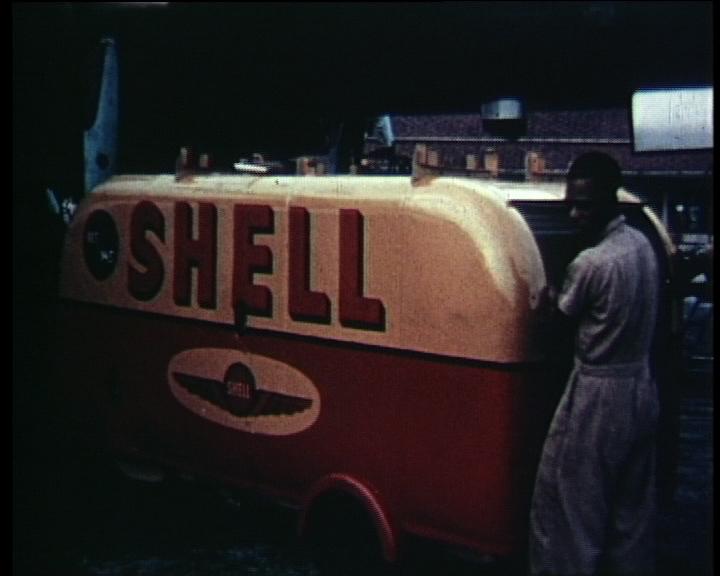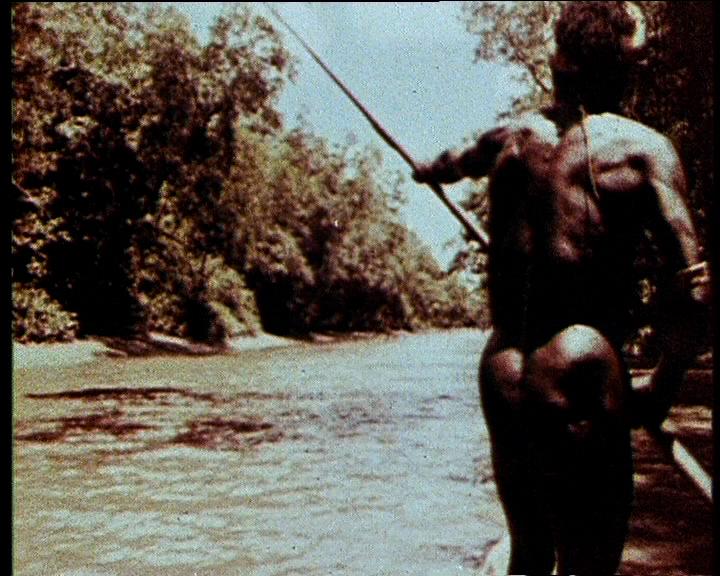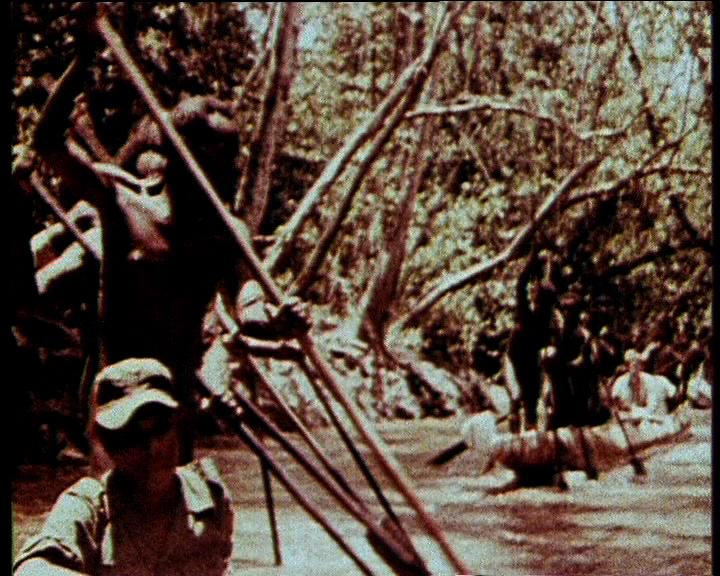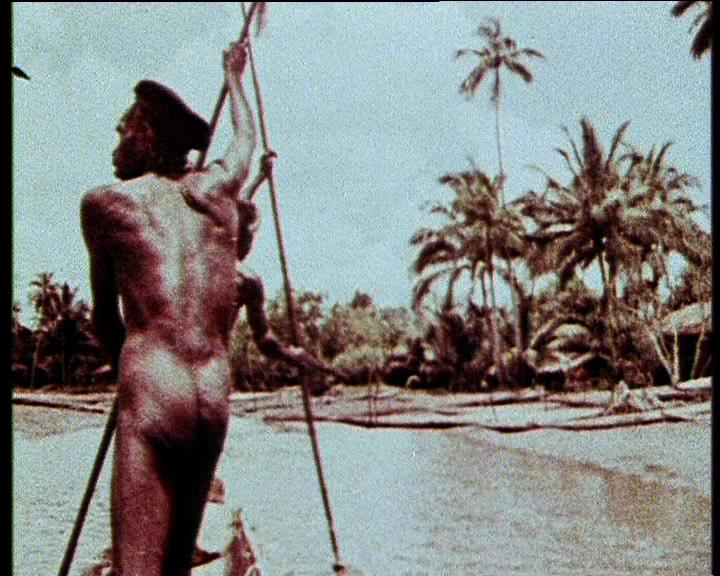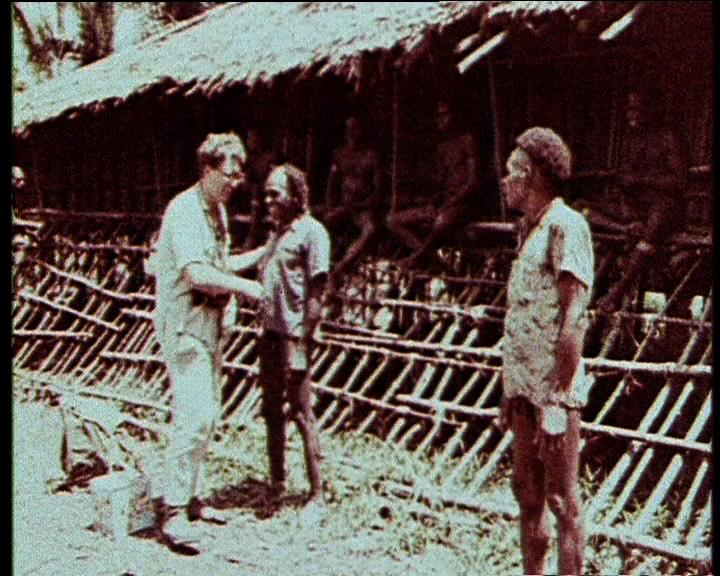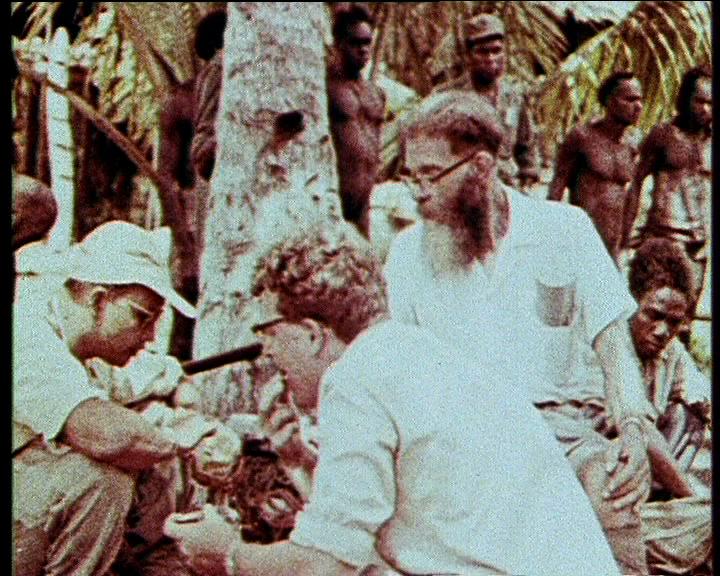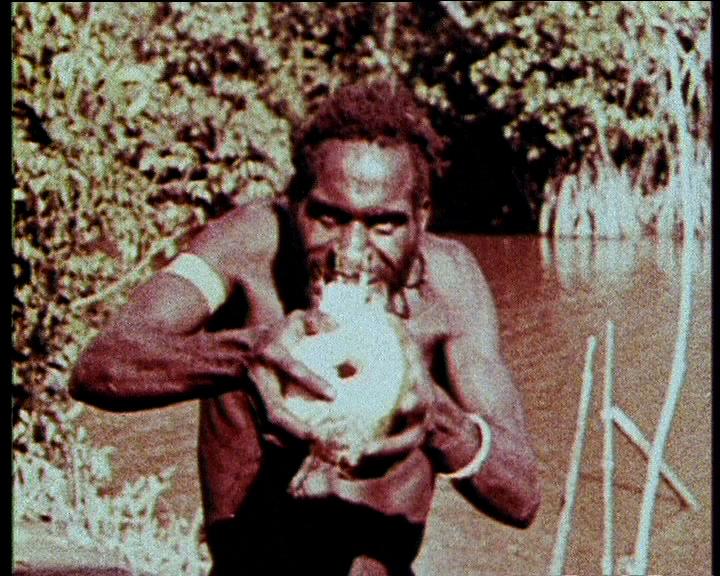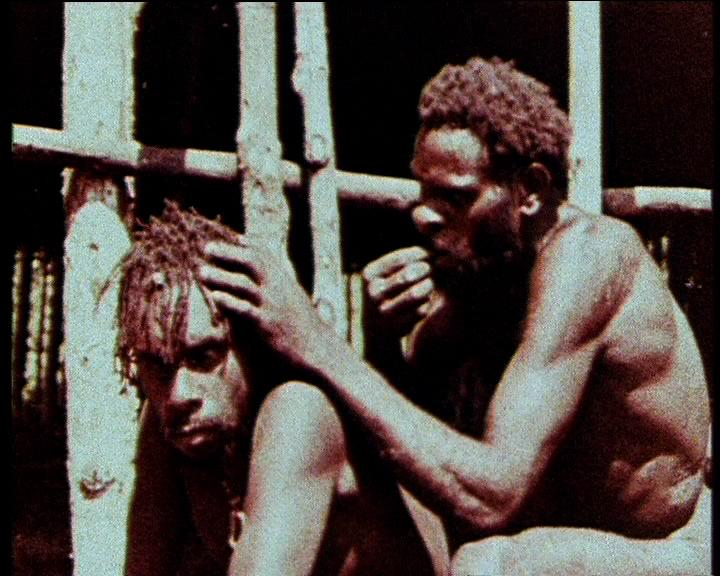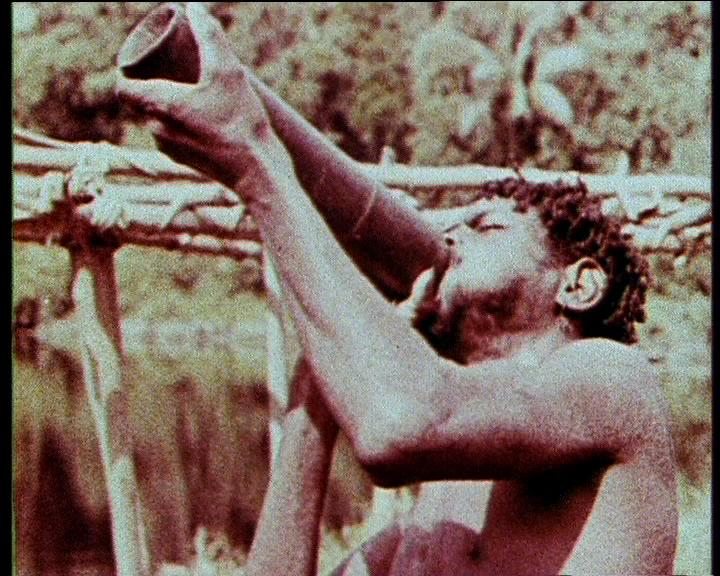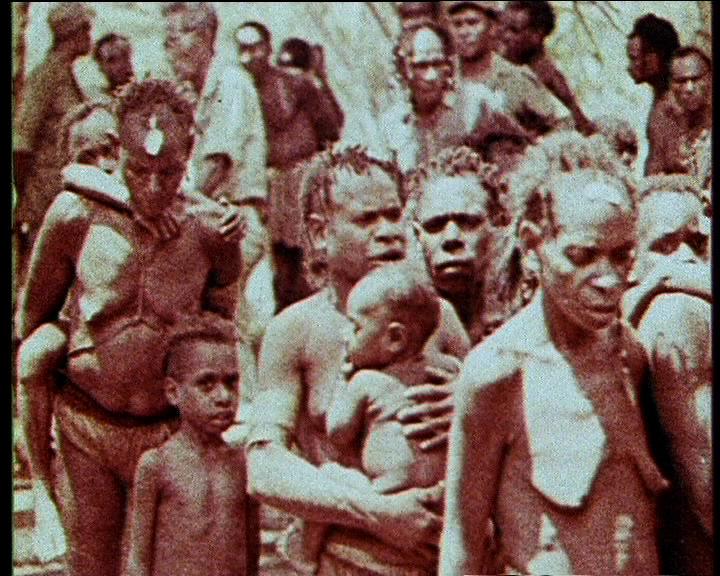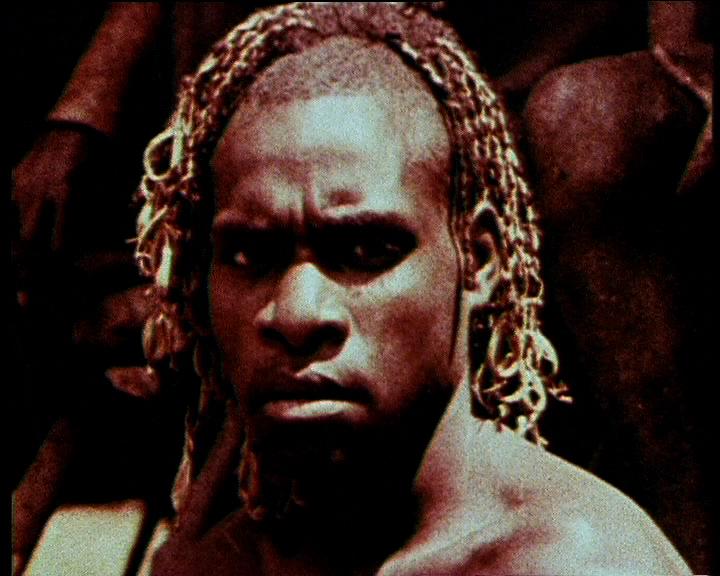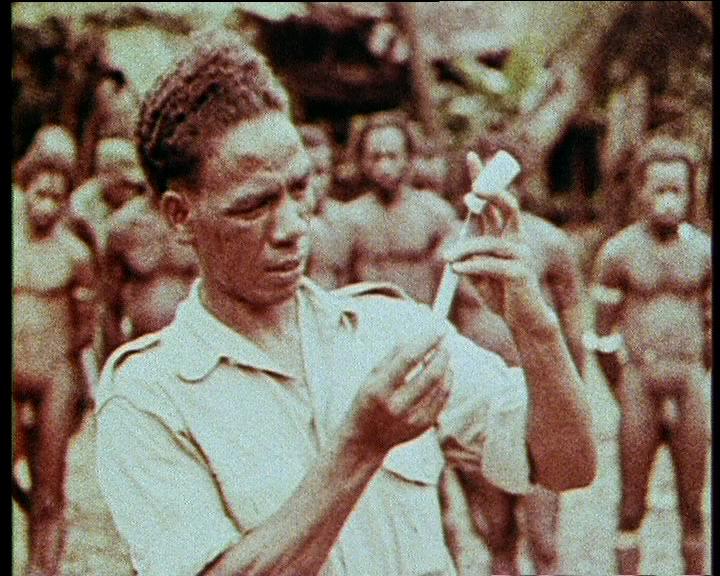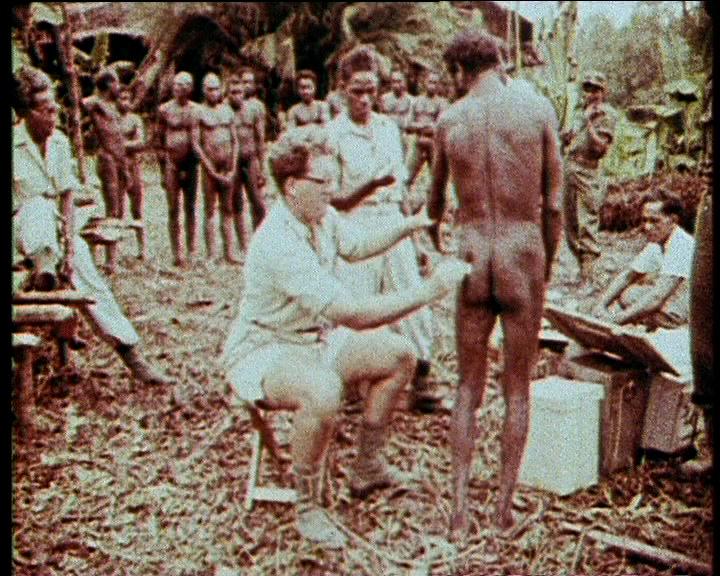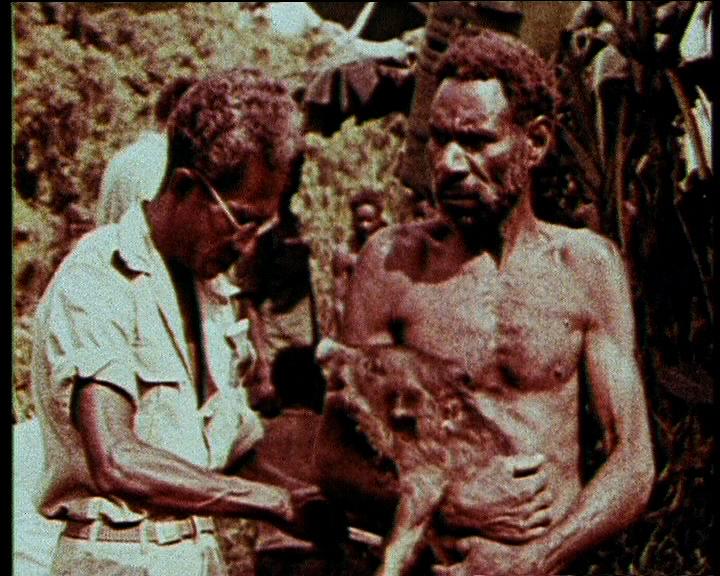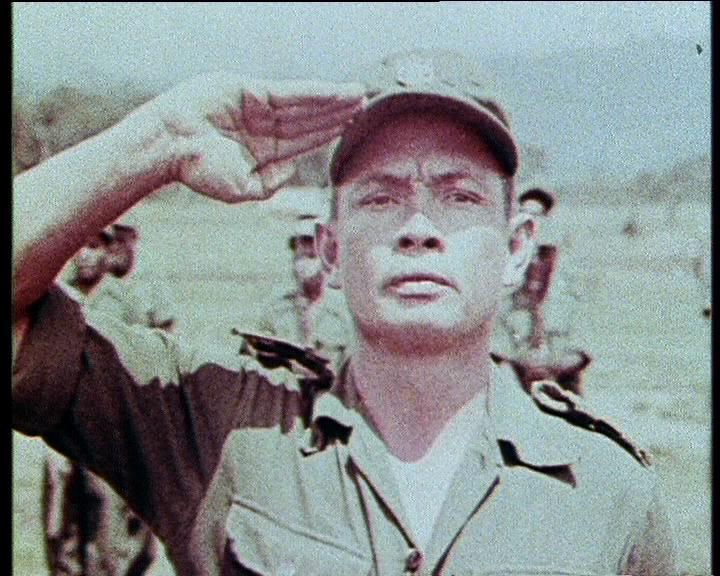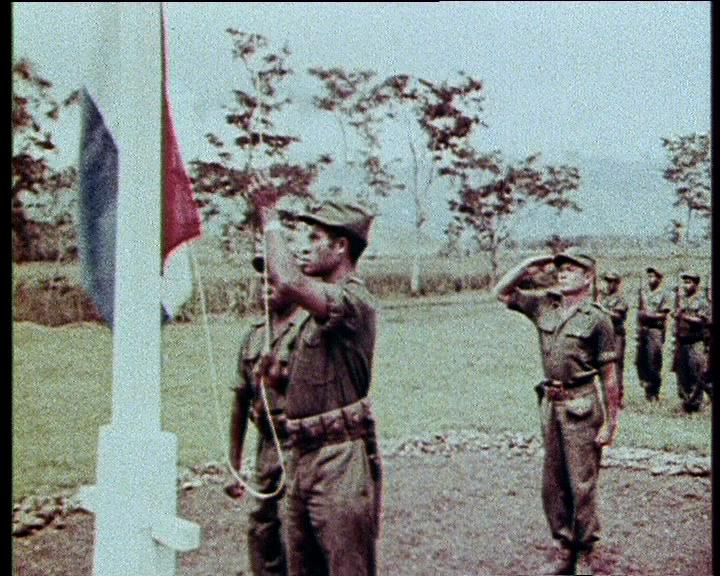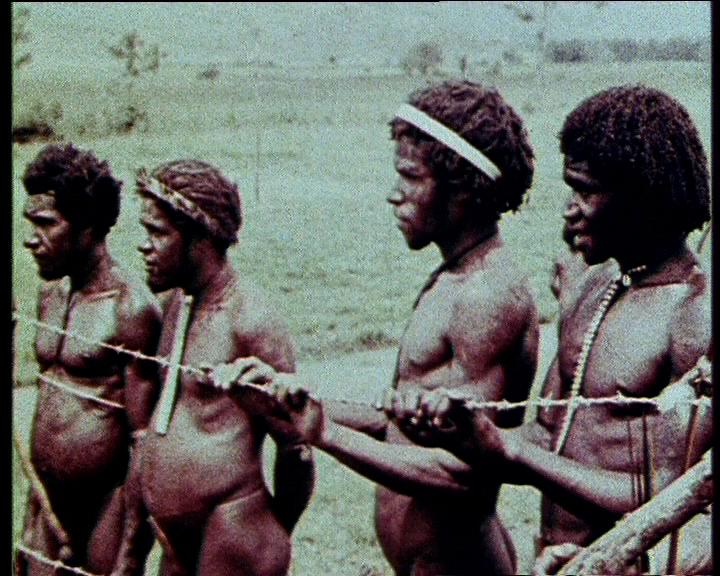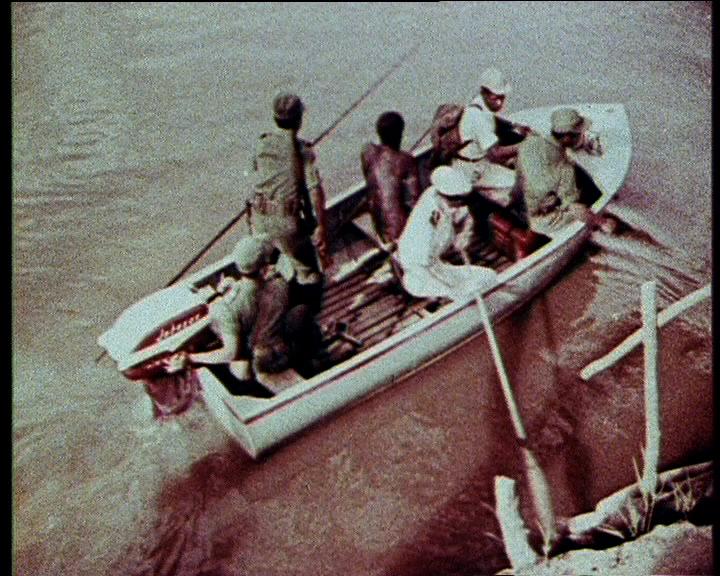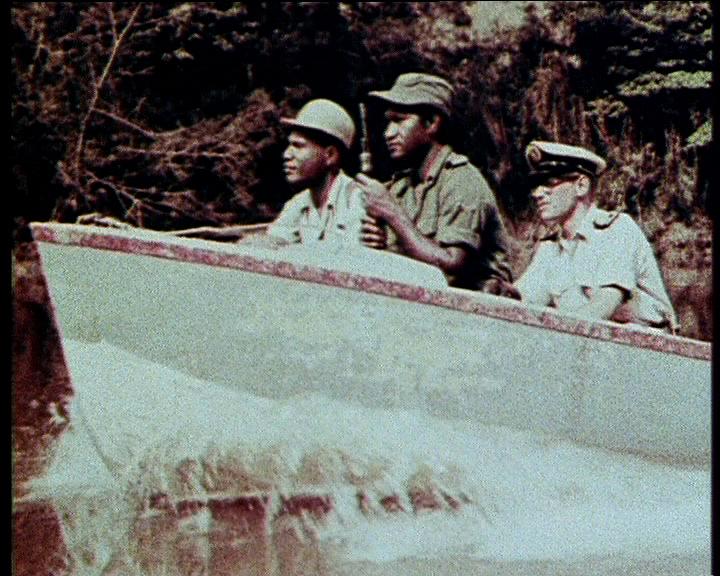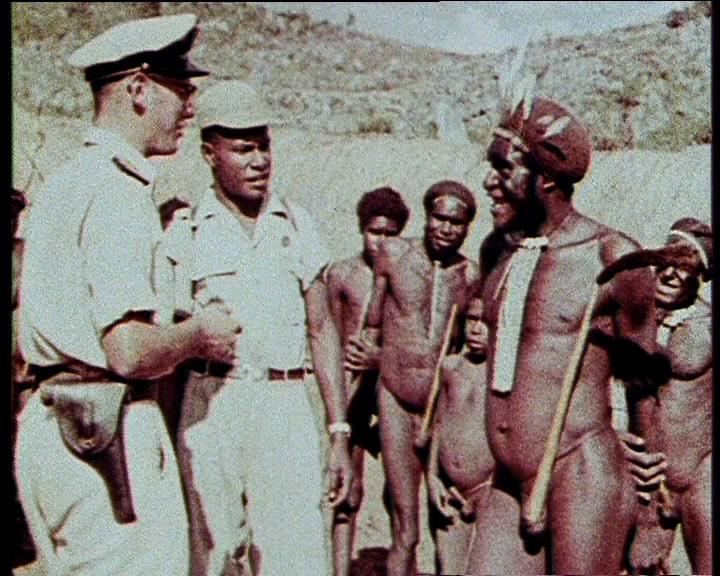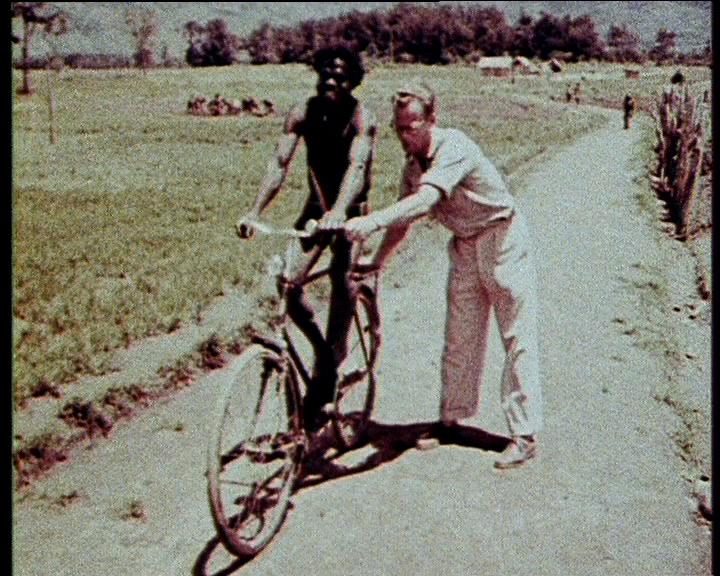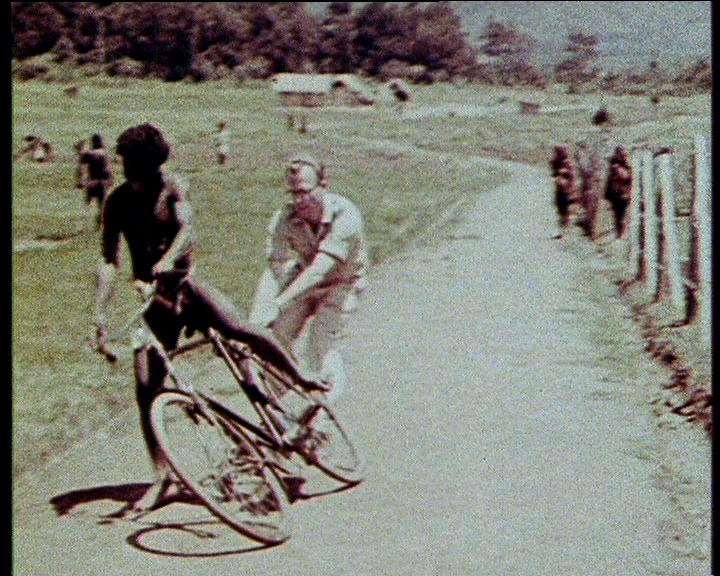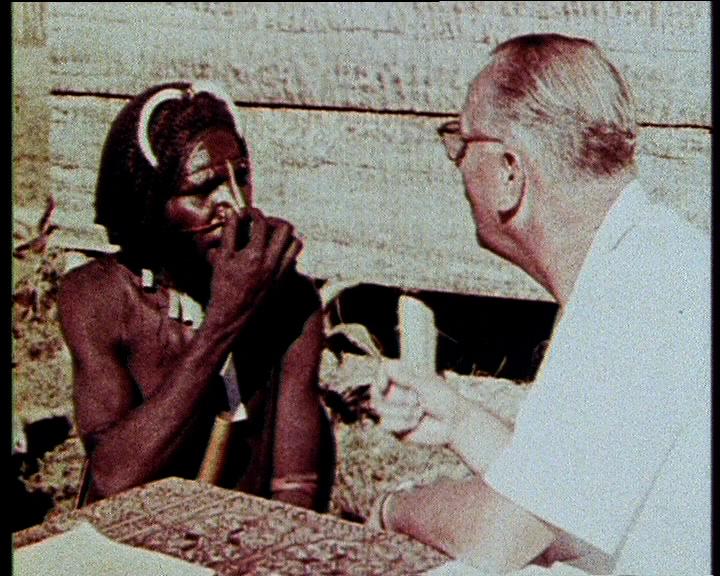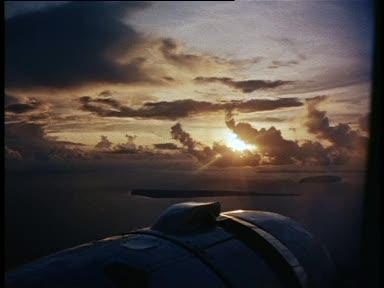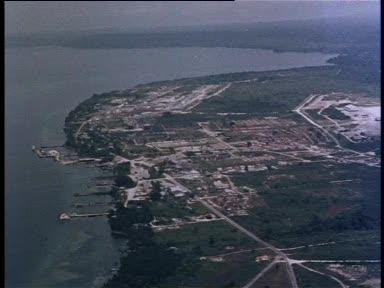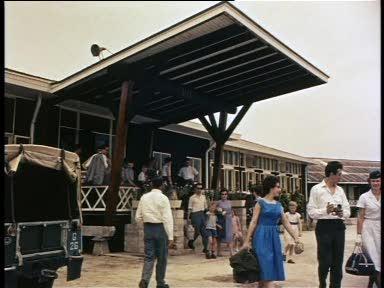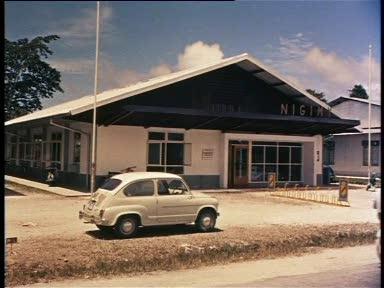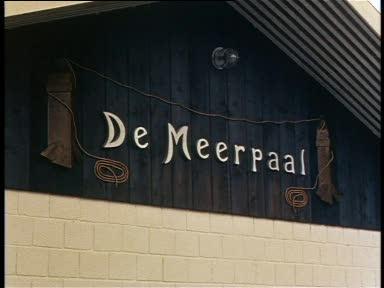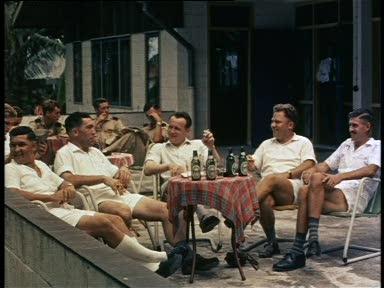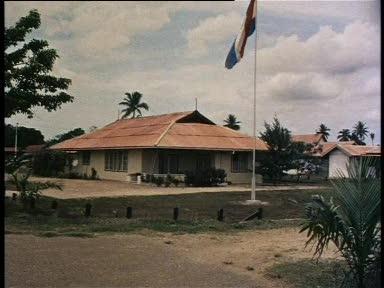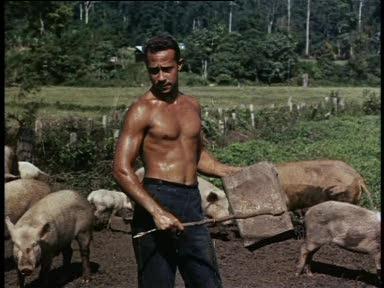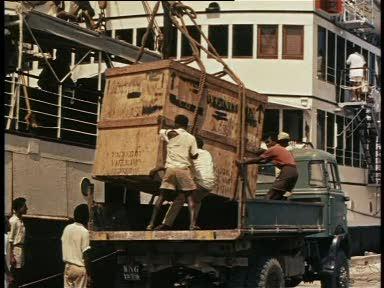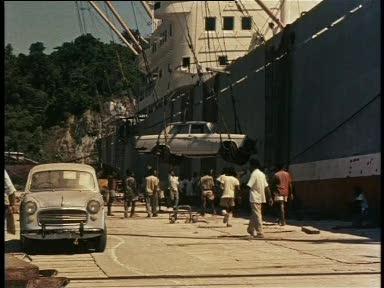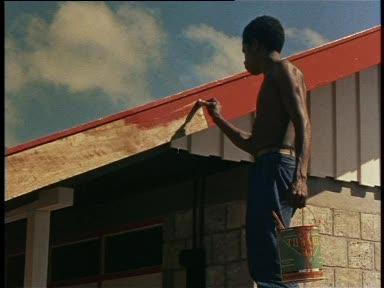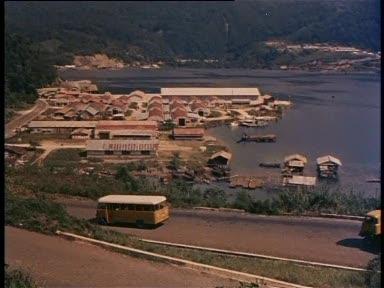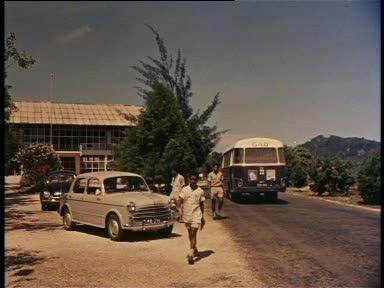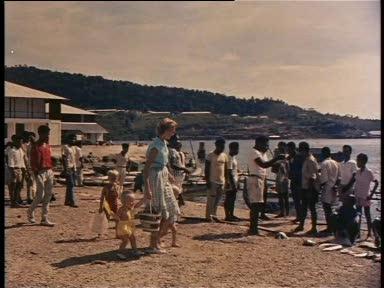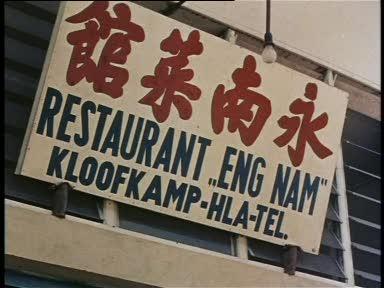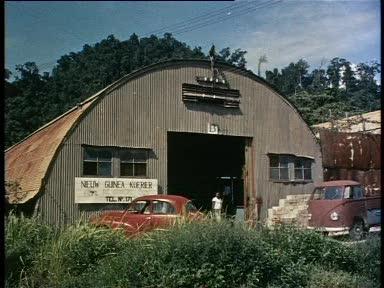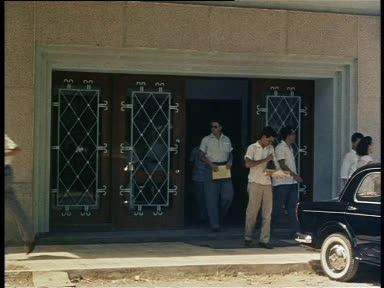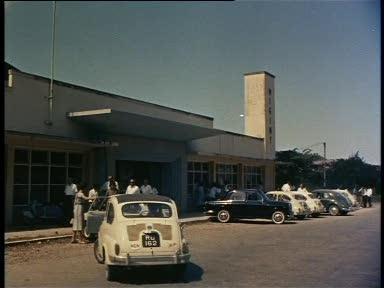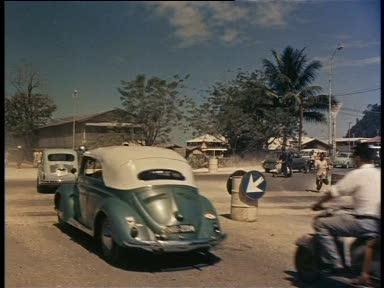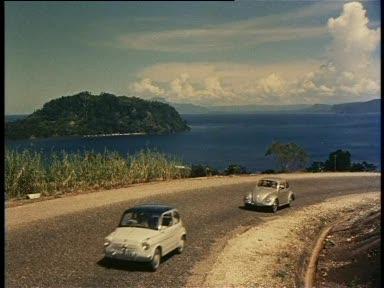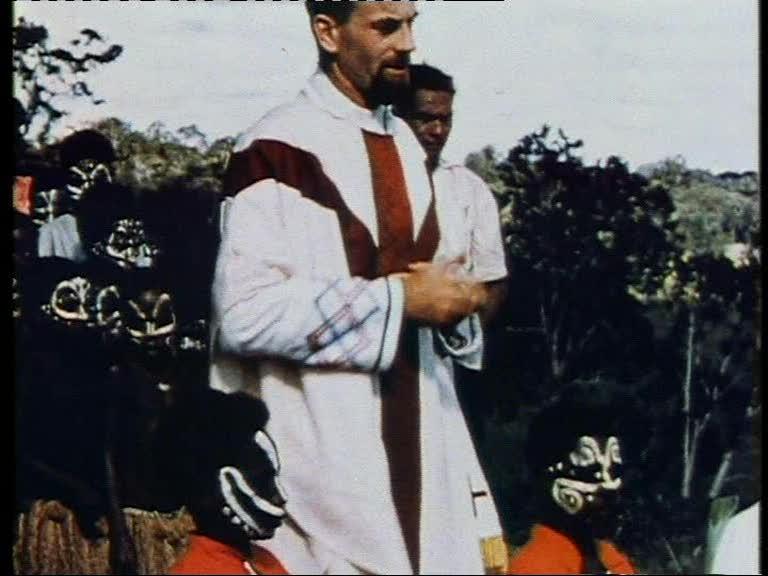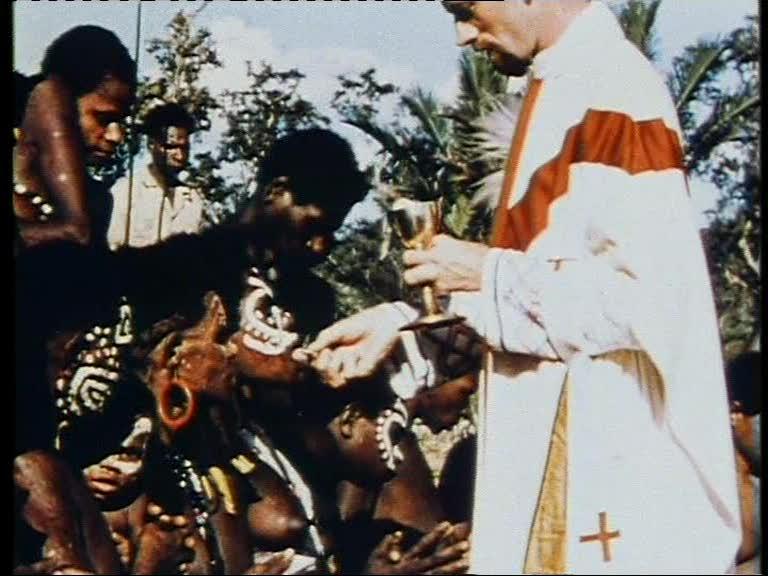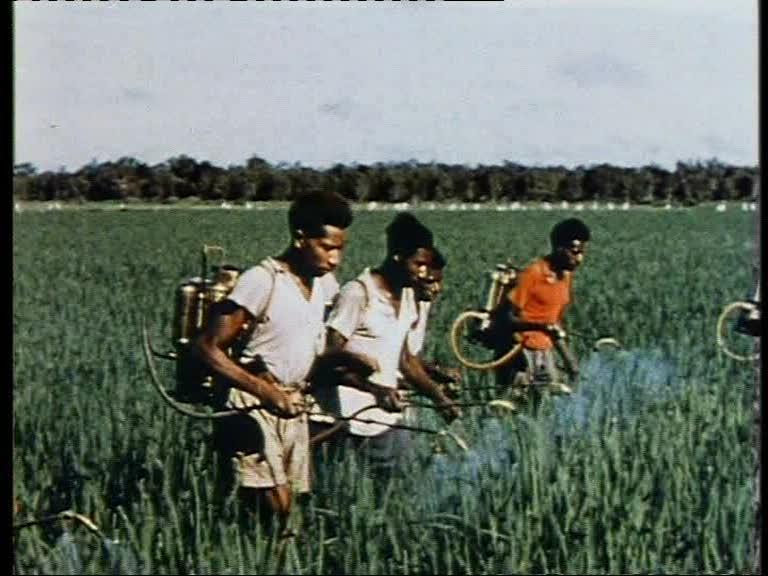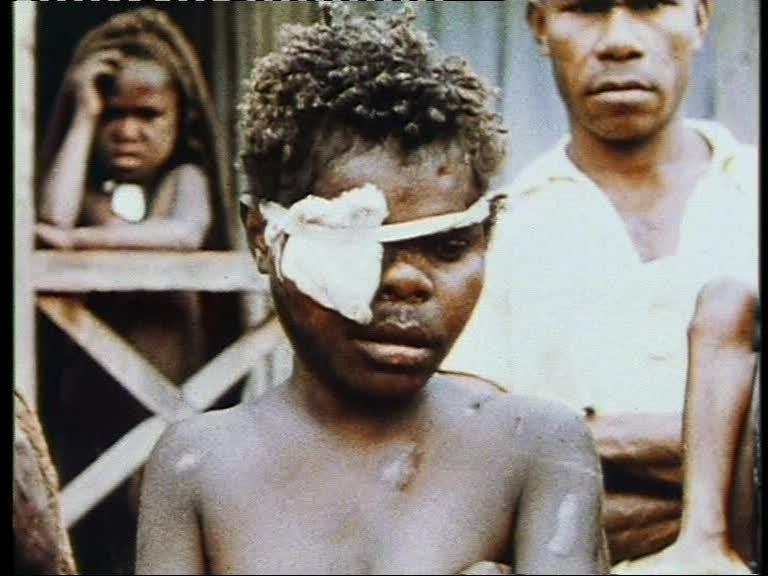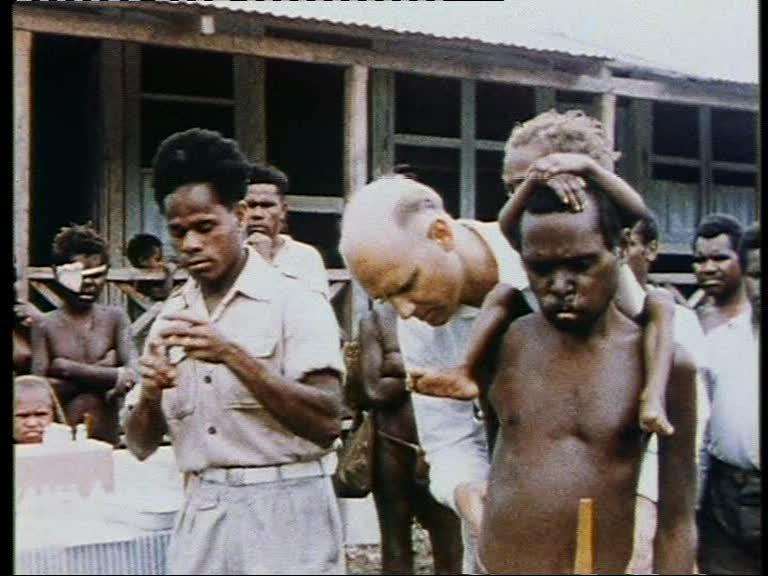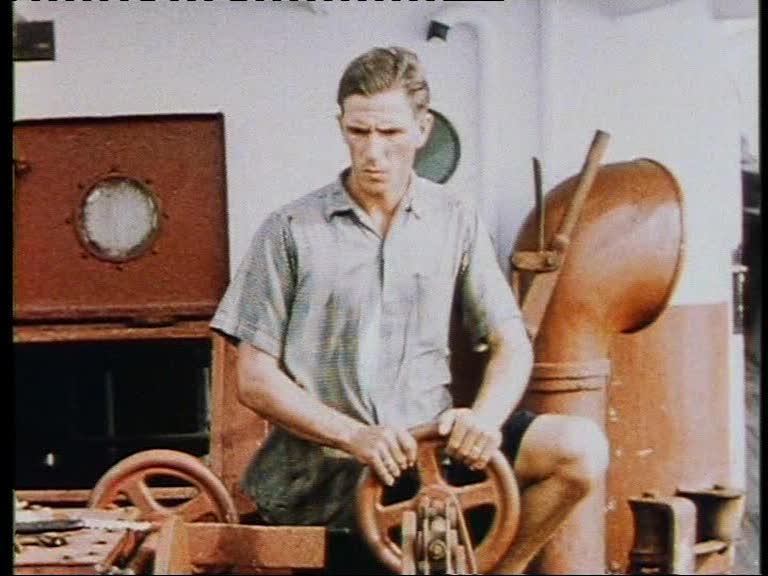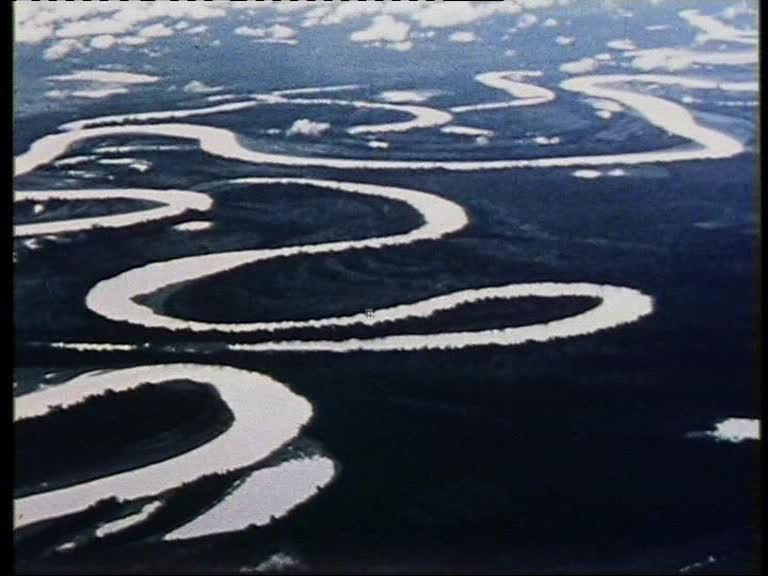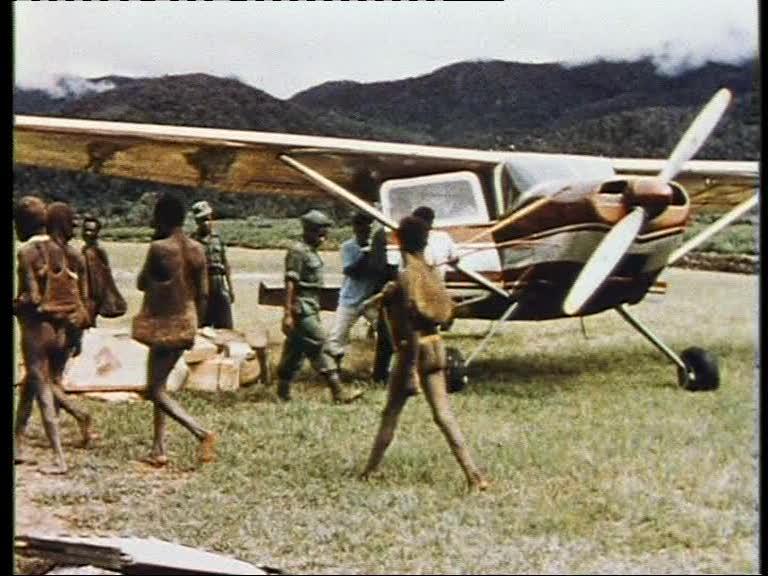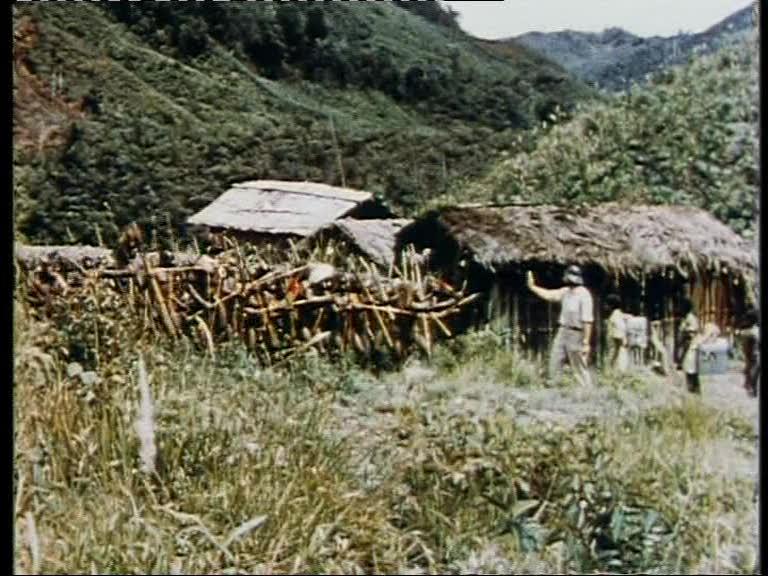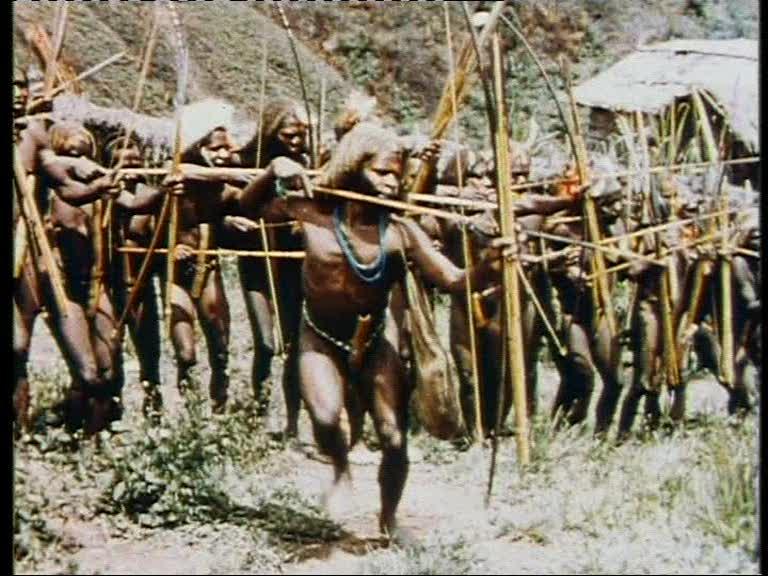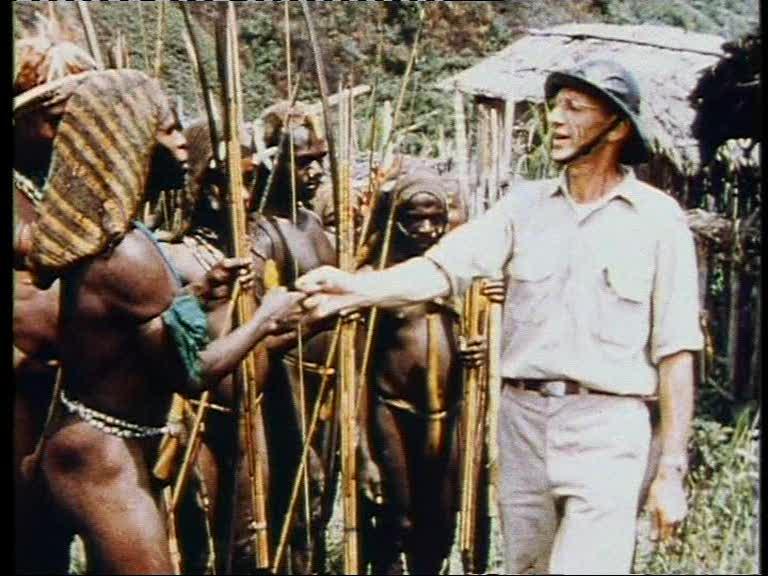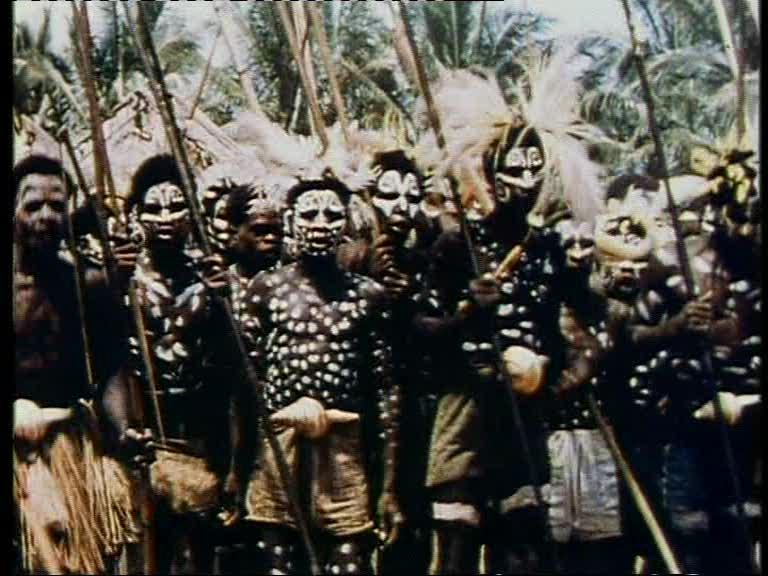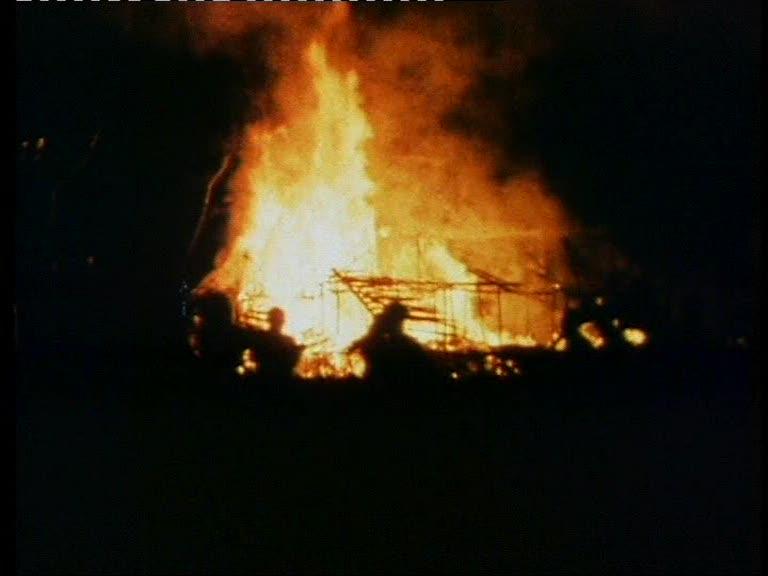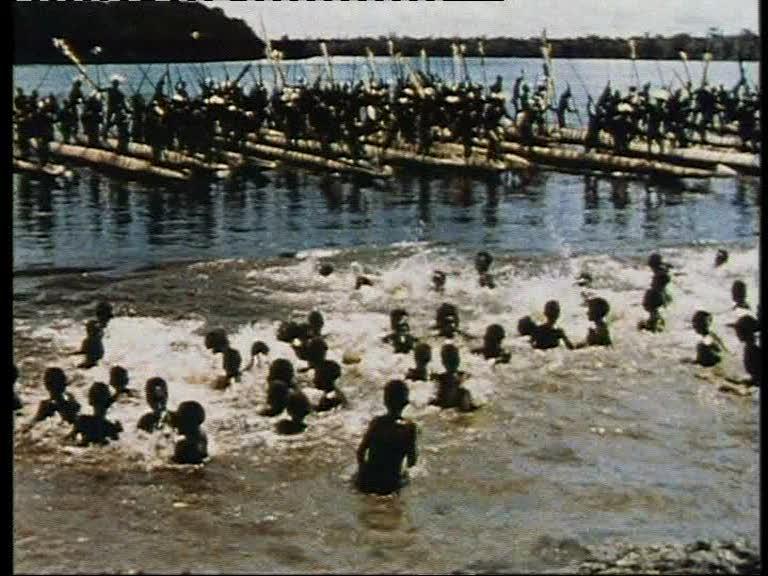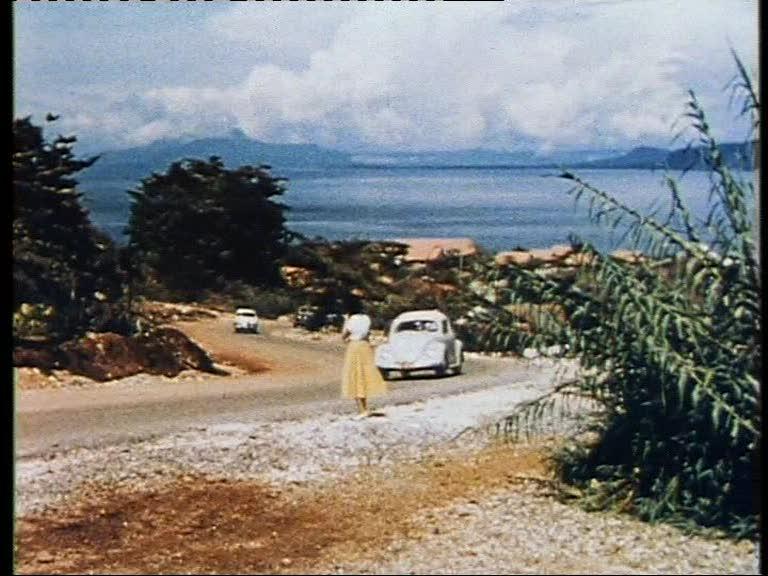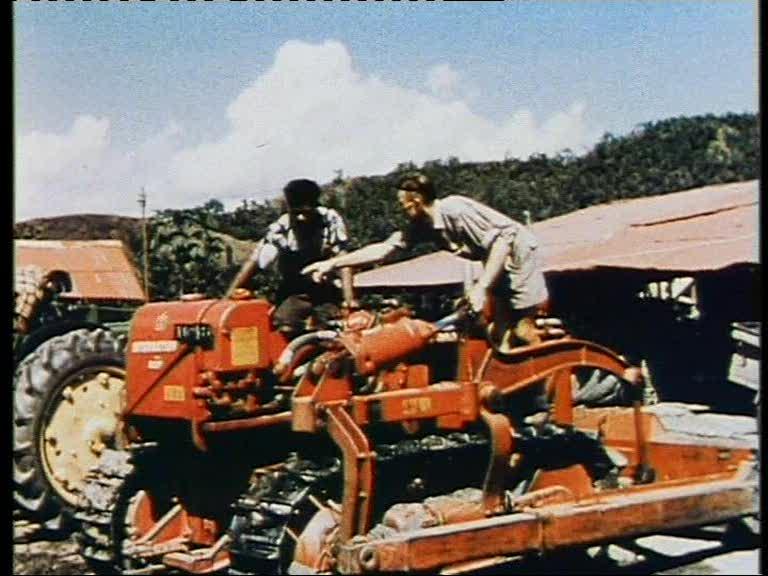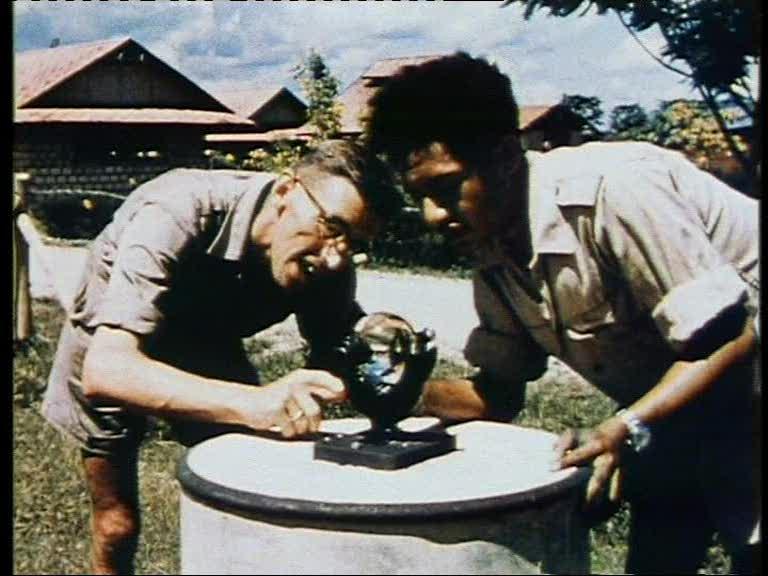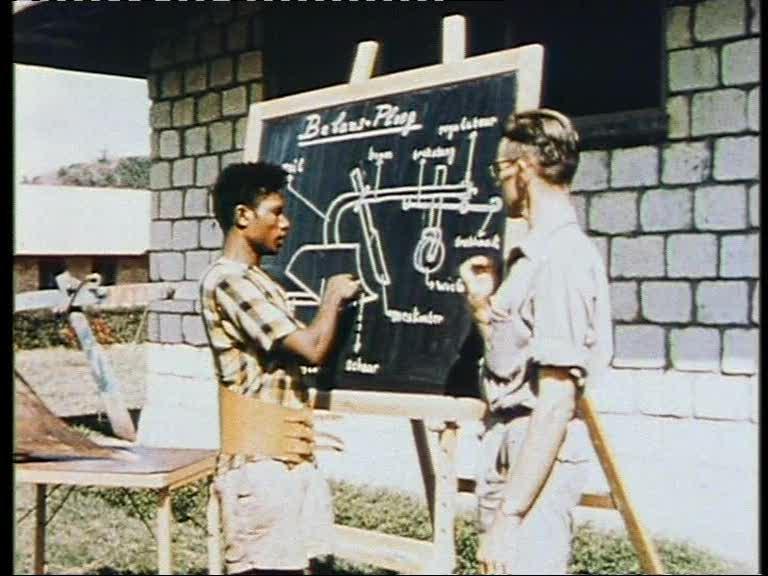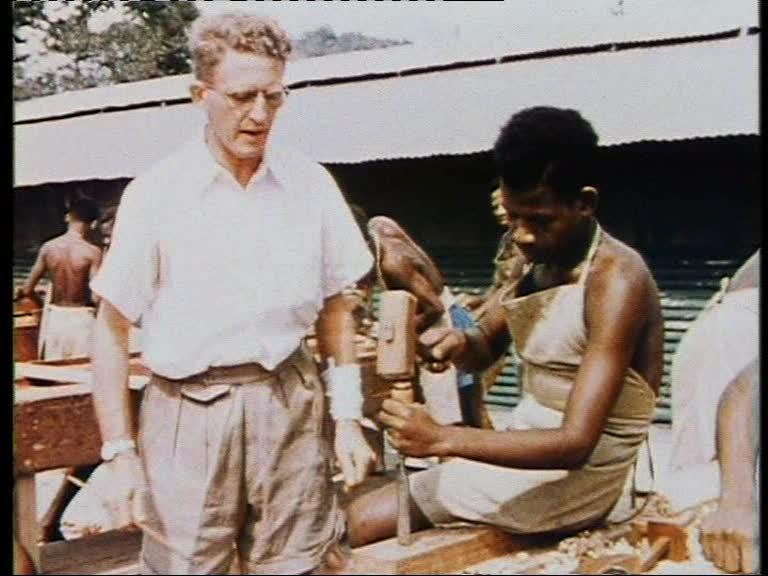A two part film about the development of Netherlands New Guinea. Part 1 shows a missionary outpost, the construction of roads, the construction of a shipyard in Manokwari, a forestry, the import of overseas goods, house-building in Hollandia. Part 2 shows the consecutive phases of education: the Village School, the central Continuation School, Professional Training and Secondary School. Intelligent Papua youths are trained to govern their vast country, where long distance connections are mostly by plane.
Contents
00.24 Caption: The development of Dutch New Guinea. Camera: A.A. Denninghoff- Stelling. Montage and Commentary: Johan van Canstein. Voice-over: Joop Reinboud. 00.39 Picture: Map of Dutch New Guinea with indication through animation of mountain ranges across, with 'white spots' - being unknown areas - the surrounding ocean and seas, the main towns and the biggest rivers. 03.05 Air-view of mountain ranges covered with jungle, in some places piercing through thick clouds as well as rivers winding through valleys. 03.50 A fleet of praus made from coarse tree-trunks. Members of the Asmat tribe in the south of the country will row these at high speed, standing. Joyful dance by men in loin-cloth, in which the dancers always remain in the same place, just moving their knees to and fro. 04.25 Close-up of a woman with head-net. A couple of male Ekari's. Pigs feast. three killed pigs, a fourth one is being put over a log-fire. 3 native women posing. Grilling a pig on hot stones, accompanied by a ring-dance, performed by a thick throng of men with sticks and lances, others, however, posing for the camera or looking on. 05.32 Missionary is sitting near smouldering and flaring up fire. He is being greeted in a hostile way by means of a so-called passion dance. He goes down to the members of the tribe, changes a knuckle greeting with the leader and reaches an agreement. A little orchestra of young men with whitewashed faces, beating narrow oblong drums. Jump dancing by young girls with white speckled faces. 06.11 Missionary celebrates an open-air Mass on a simple altar, the whole of the population lining up behind him. Afterwards they kneel in front of him to receive the Holy Host. 06.36 Carrying-poles with coconuts are being brought to the site of festivities in procession. White speckled natives put those coconuts on an open space, continuously accompanied by young girls dancing rhythmically to the music of the drummers. 07.15 Missionary and his wife are teaching young men and women squatting and with western clothing. Transfer of knowledge by a young lady and a young man to individual fellow tribesman, using a simple textbook. 07.50 The Village of Enarotali, situated on a hill descending into the Wisselmeren (danau Pania) Papuas awaiting their turn at an open-air polyclinic, where a European lady is applying an eye dressing. Another lady is conducting a choir of boys and girls sitting against a shed. 08.28 Ekari's going in great numbers to the church, where indigenous minister leads the service. Men smoothing the ground squatting to build an airstrip. After completing all of them are being called together by the overseers. 09.00 Dutch civil servant scoops blue beads from a jute bag with a cowry shell into cardboard box. At his side are lots of shells and metal axes without handles. Women with head nets. The civil servant pays labourer, asked to come forward, a shell full of beads, hands over an axe and a cowry shell as payment to someone else, after which exuberant crowd performs a ring-dance. 09.43 Some tribesmen paying each other with beads. Young woman shakes ubi's (sweet potatoes) from her head net and receives payment in beads from the missionary's wife. Cleaning the ubi's by a servant whereas some young fellows are looking on. 10.03 Pulling down young trees by means of a heavy chain between two bulldozers. Pushing over tree trunks with bulldozers driven by Papua's. Big bulldozer pushes bulky heap of earth forward. Smoothing the embankment with shovels. Dragline drops a full scoop of earth on the embankment. Digger slews round a full scoop, emptying the contents in the container of a kipper, which speeds off immediately. Kippers on their way on roads partially finished. Surveyor with his theodolite. Kippers unloading their cargo. Planing-machine smoothes the top of the road, which then is sprinkled by a tanker en compacted with a steam-roller. After that the roadway will be sprinkled with bitumen. 12.13 General view of the construction of a slipway at Manokwari. Dozer pushes a heap of coral rubble, which is loaded onto a GMC by a dragline. De slipway under construction, portals and spans awaiting assembly, concrete sheds covered with corrugated sheets. A shipyard's crane unloading heavy ship's parts. A tug-boat the keel of which is being welded. Shipyard worker removes pressure gauges from a gas bottle. Workers dismount a ship's screw. General view of the ship yard. 14.02 Woodcutters are cutting from scaffolding around a tree a big wedge in a tree, which shortly afterwards tumbles down under heavy noise, tearing down young trees in its fall. Dragging out the tree trunk from the jungle to the collection yard on the coast, hanging on a tracked timber-wagon, drawn by a dozer. Cutting up the trunk in manageable pieces with a chain saw. Bulldozer draws a tree trunk aside, shoving it onto the deck of a pontoon. Sawyers walking with a chain saw on a tree trunk. Cutting of the rootstock into thick slabs with a horizontal chain saw. Putting laths between the slabs for drying. 16.41 Cutting a tap groove in a tree, through which the resin trickles, piling at the foot of the tree from where lumps of it will be put into jute bags. Papua's carry bags of resin (copal) from a shed outwards. Sewing up a bag with needle and thread. The bags are being carried to the beach where a coaster is at anchor, and from which a sloop is launched. The beach as seen from the vessel. The sloop is being rowed to the beach, to be met by bearers with bags of copal. A double body rowing prau alongside the coaster. The bags are being put into the sloop, an outrigger prau glides past. A coaster's crewmember operates the winch and another one holds the derrick, whereas a load of bags with copal from the sloop is being lowered into the hold. A double body prau pushes off. The pallet is being put overboard. 18.36 The coaster's wheel-house with the captain, who with his glasses checks the surroundings and the native helmsman at the wheel. The navigating officer takes his bearings from the shore and plots the course on the chart. View of the coastline near Hollandia-haven. The coaster Cycloop moors at the pier. A hotel-ship of the Royal Navy at anchor in the Humboldt bay. 19.13 Trading-vessel courses deliberately through a smooth sea to the harbour, approaches a pier, after which a sloop picks up the hawser lowered from the stern, which is belayed on the bollard by dock men on the pier. Dock men with unloaded bags on hand-trucks. Unloading of packing cases with proper derrick. Fork-truck with bundle of sagging reinforcement rods. 20.30 Panorama of Hollandia and Hollandia-Haven with winding road descending to the coast, along which loaded trucks are going upwards or downwards and along which modern residences are under construction. 21.08 Houses under construction. Native carpenter is planing a piece of wood. Papua brick-layer puts mortar on a wall, on which headman puts building-block. Papua carpenters are putting up windows. 21.26 End of part 1. 21.49 Teacher (guru) hits an empty oxygen bottle hanging from a tree, after which children are going up a little hill, entering the foreyard of a school. The board of the village school at the entrance of the school, built by the villagers themselves. Native teacher points to the parts of a native house of which the exploded drawing has been made on the blackboard. The young pupils on the forms in the open air. Close-ups of the teacher and attentive pupil. 22.29 Native school inspector enters the building and the classroom, shakes hands with the guru, at the same time the pupils stand up from their forms. The school inspector has a little chat with the guru, cleans the blackboard from the Malayan writing and writes a couple of sums down. The pupils work out the sums on their slates, after which the inspector checks the results. 23.10 Building complex of a secondary school, situated on a bay, where a Dutch teacher teaches a class of attentive working young Papua's. View across the bay of the mountains on the other side. Dormitory for the boys where they put their mosquito nets over the beds. They leave the dormitory with soap and towel going to the bay. Boys bathe in the water of the bay. 24.11 Walled-in technical school with indication of school-type. The building complex. An apprentice fitter at a lathe, he stops the machine and with a vernier calliper checks the work-piece. Battery of lathes lined up at an angle, where apprentices are working. Planks that are being used for a dwelling under construction. Teacher shows apprentice how to take the measures and how to fasten the ridge-pole. Apprentices are painting book-cases and other furniture in various tones. 25.04 Electrician sits high up in a power pole and winds wires. Papua boys are behind their Morse keys for their training as telegraph operators. Boys fly a weather balloon which is tracked through a special telescope, stand-mounted, during their training as meteorologists. 35.35 Open-air polyclinic. Papua maternity nurse prepares an injection. Nurse sucks up a blood-sample through a tube from a child. The maternity nurse administers the injection to the infant. Dutch anaesthetist puts mouth-cap on. Papua doctor's assistant looks up a card in the card tray. Anaesthetist and the Dutch surgeon, assisted by native theatre nurse and co-surgeon. Native accountant works with typewriter. 26.04 Big model of anopheles mosquito on the board at the entrance of the malaria health care station. Close-up of student looking through microscope during lessons assisted by 4 students. Lecturer indicates on the blackboard the various phases of the disease. 26.31 Mixing of DDT powder in a bucket of water, after which the mixture will be poured into a back tank, which will be brought on pressure by pumping. Disinfecting a house by spraying DDT liquid as protection against malaria mosquito. Putting a number with a stencil, as a sign that the house has been treated. Supplying anti-malaria tablets to the inhabitants of the sprayed houses, who take the tablets immediately, with the exception of a baby in his mother's arm. 27.27 Placard stating Research Station Kota-Nica near the Agricultural Research Station. General view of the trial plots. Students of the agricultural education working in a hothouse. Pulverising protective stuff between the fingers, through which cocoa kernel will be rolled, before putting it in the ground. Transplanting seedlings. Inoculating a young trunk, bearing fruits already, after which the split bark will be dressed. Tipping of fruit-trees with special prune saw. Spraying the plantation with motor sprayer on the back. Grass mowing with horticultural tractor. Ploughing with a disk-plough after a caterpillar-tractor. Tractor with blade-plough. Instruction about maintenance of tractors and agricultural equipment. 28.35 Pilot project of small rice-plots, being inspected by a Dutch adviser. Village headman calls the people banging an empty oxygen bottle. The people flock together in front of the headman's house looking on how a laid table is readied. The tax collector with the headman at the table, where every householder has got to settle his taxes. 29.28 Uniformed civil servant, accompanied by a group of students of the administrative school, walks through community plantation to the resident's coconut plantation to be shown the numbers and the size of the palms, on which the disputed assessment is based. The civil servant and his train continue their way through banana plantation. Hearing of a lawsuit by official. Surrounded by the people the official sitting at a table and assisted by a clerk hears both sides on a quarrel. After that he pronounces sentence. 30.34 Placard above the entrance of the police college at Hollandia, where lined up detachment of recruits is practising. Students in battledress are taking the hurdles of the assault course near the school. Platoon marching through a valley in the interior where a shallow pool is forded. Laying out a bivouac in the jungle, cooking rice on an open fire and the building of a shelter from palm leaves. The men are queuing up for the distribution of the cooked rice. Dutch instructor eating his plate of rice. 31.49 Signboard above the entrance of the lower nautical college. General view of the building complex. Students lined up for the flag parade. Hoisting of signal-flags. Heaving the lead from the lead-stand. The bridge, where are an officer, the helmsman and a sailor. To operate the ship's telegraph. Simultaneously hoisting up a sloop by a group of students. Close-up of student splicing hawser during roping instruction in the open air for the whole group of students. The students dismiss after the lessons are finished. Football match among the students with enthusiastic spectators on the gallery. 32.44 Group of girls are having a running contest. Javelin-throwing. High-jumping for boys. Cheering girls. 33.15 Letters PMS on the school lawn for the Junior Secondary School. The main building and one of the classrooms where older pupils are receiving geometry lesson. 33.46 Marcus Kasiepo, prominent Papua representative to the South Pacific Conference, delivers a speech, which is being recorded. Traffic controller speaking in the mike, from the tower of Mokmer Airport on Biak, from where he - a Papua - has just talked down a KLM Constellation into the airport. The machine taxies to the tarmac. Luggage lorries behind a 4 wheel Unimog arrives at the machine, from where the passengers are leaving. The passengers go through the arrival lounge. They go through the customs, open their trunks and pay import duty if necessary. 35.10 Petrol truck arrives followed by mobile compressors. The KLM Hotel 't Rif to which the new-comers are going. DC-3 machines on the airfield. The traffic controller who has talked down a DC-3 and a Twin-Otter. Piper Cub taking off from an airstrip. A Royal Navy PBY Catalina amphibian flying-boat taking off from the airfield. DC-3 making a low pass over Mokmer pulls up and gains height. 36.13 Air view of the runway, of a strip on an open plain in the interior, of a dead straight concrete airstrip on the edge of the jungle. Of a coarse strip, hardly recognizable from the air, of the oil drilling rigs in the Muturi valley, and the pipeline to the loading port in Klamono. The red painted oil tanks on an elevation near the oil rigs, the living quarters for the employees, the landing-stage in the river. A strip across an island surrounded by an azure sea. New residential area in Holandia-Stad and the oil tanks and sheds in Hollandia-Haven on the Humboldt bay. The slipway at Manokwari. 38.30 Text: The End with Logo of the Government Information Service. 38.39 The End. (source: www.beeldengeluid.nl)
